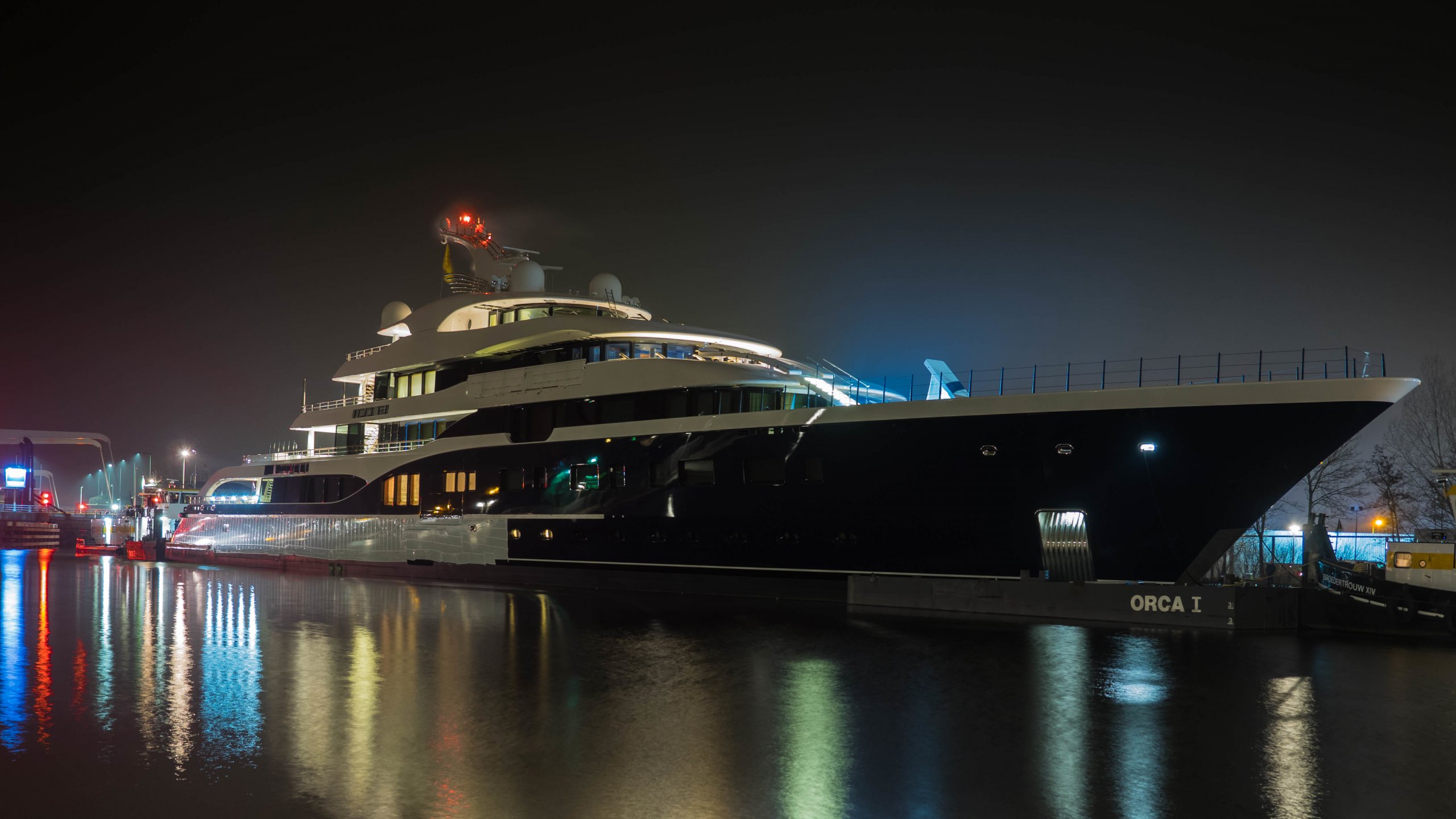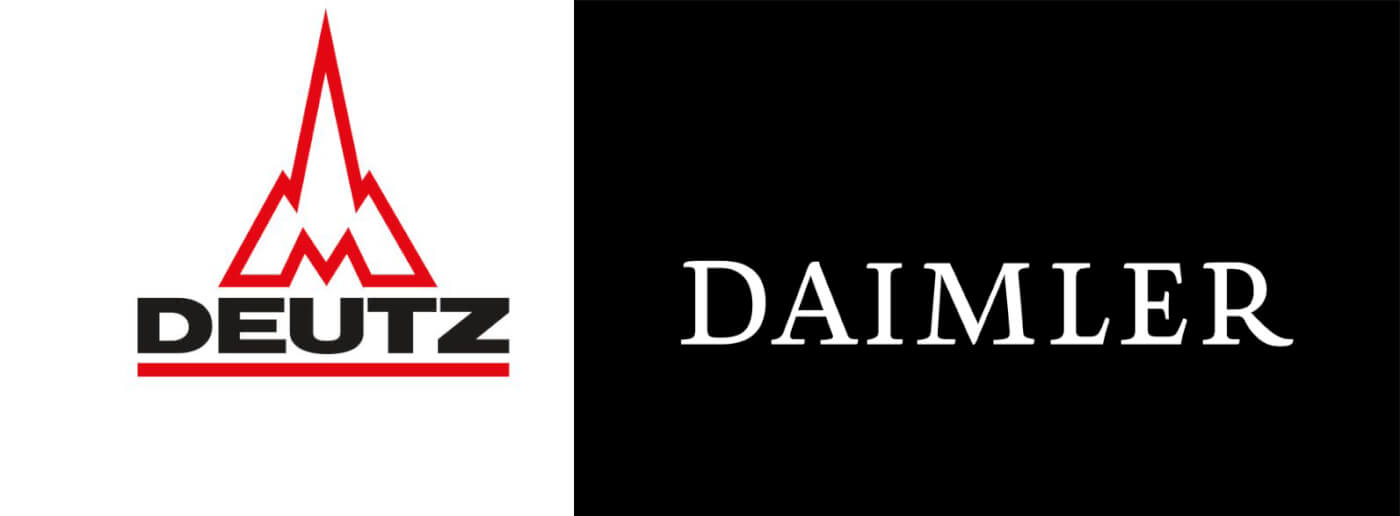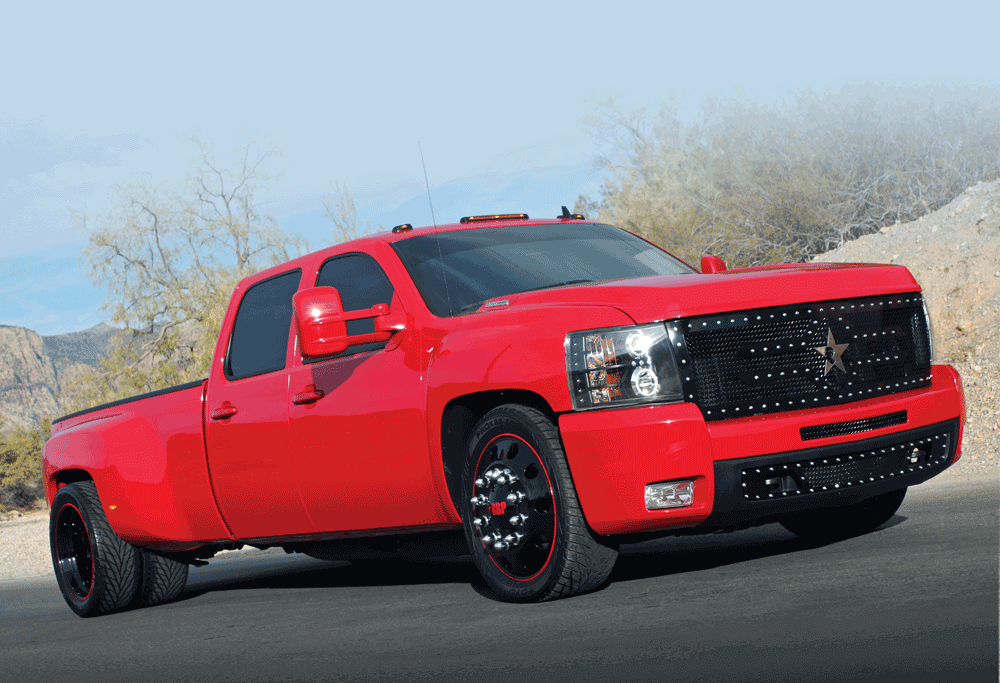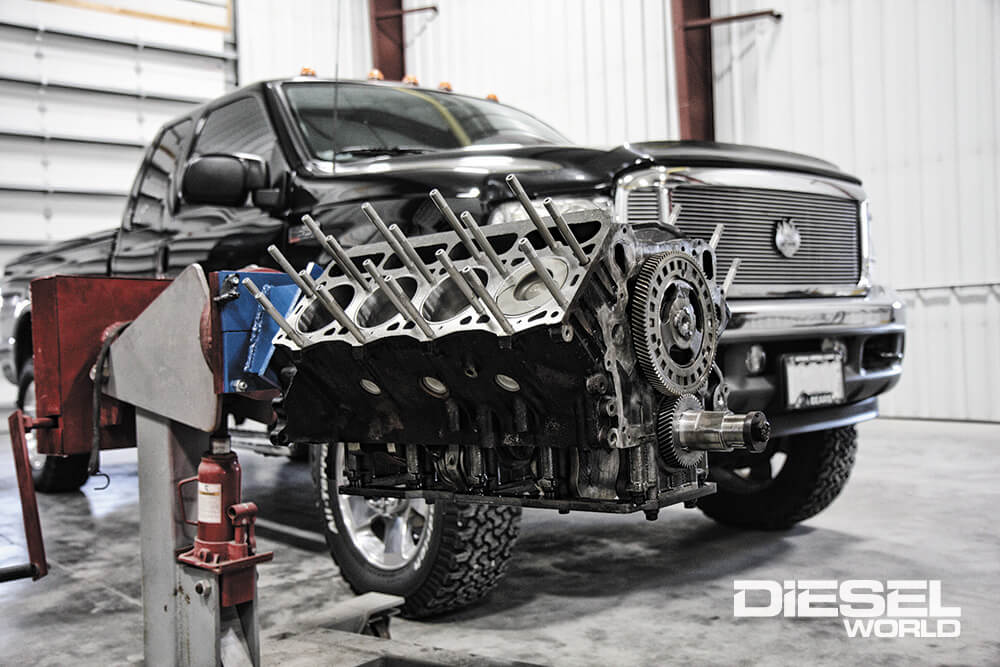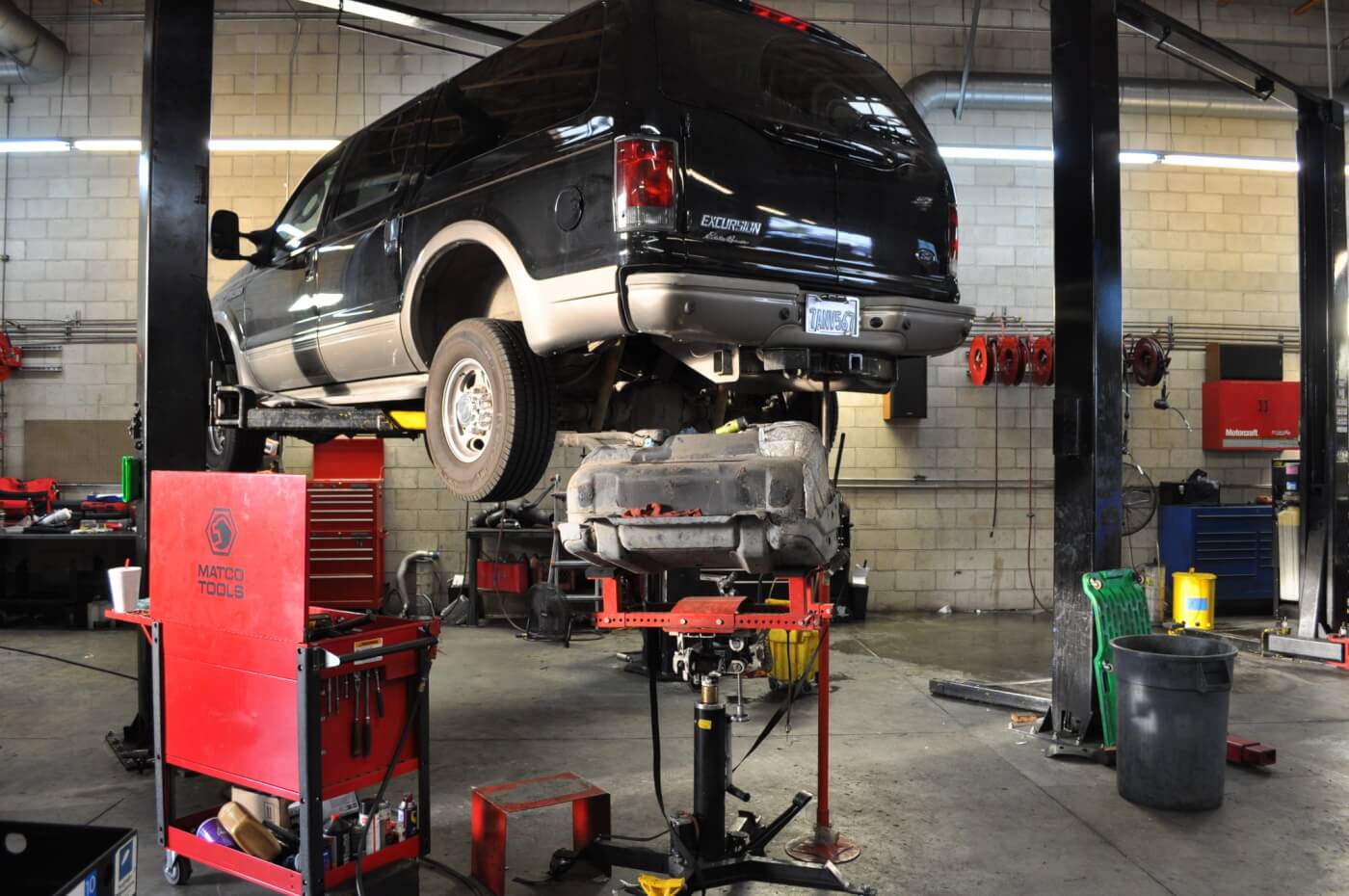The Best Diesel Engines: Top 10 Of All-Time
The Most Revered Oil-Burners Ever Assembled
From the farm to the highway, construction equipment to gen-sets, and emergency vehicles to the trucks we drive every day, diesels have built—and continue to build—America. Even beyond our borders, in every mechanized blue-collar segment of the world, you’ll find a diesel in charge of the lion’s share of the workload. And although it goes without saying that all engine manufacturers strive to turn out the best product possible for every application, some power plants are simply better than others. Be it due to their durability, mechanical simplicity, or horsepower potential, these oil-burners are a cut above the rest—and we have 10 of the best diesels ever concocted to tell you about in the pages that follow.
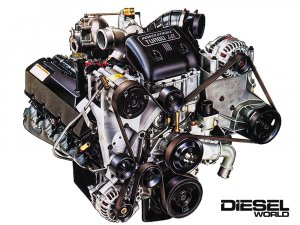
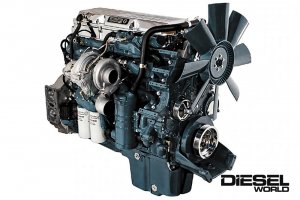
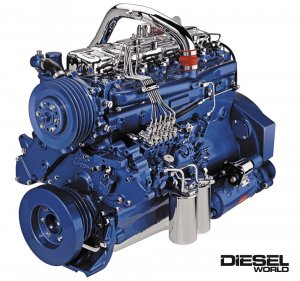
Many of our choices hearken back to the good old days, before the emissions crunch had completely taken hold and acronyms like EGR, DPF, and SCR had yet to complicate and ultimately cause so many of the reliability issues we’re familiar with today. Names like Cummins, International, Caterpillar, Detroit, John Deere, GM, and Mack all made the list, and the engines we’ve selected represent some of the finest examples of compression-ignition on the planet. Even with most of them now out of production, they remain celebrated and treasured. Without further ado, and in no particular order, we give you “the list”.
International DT466
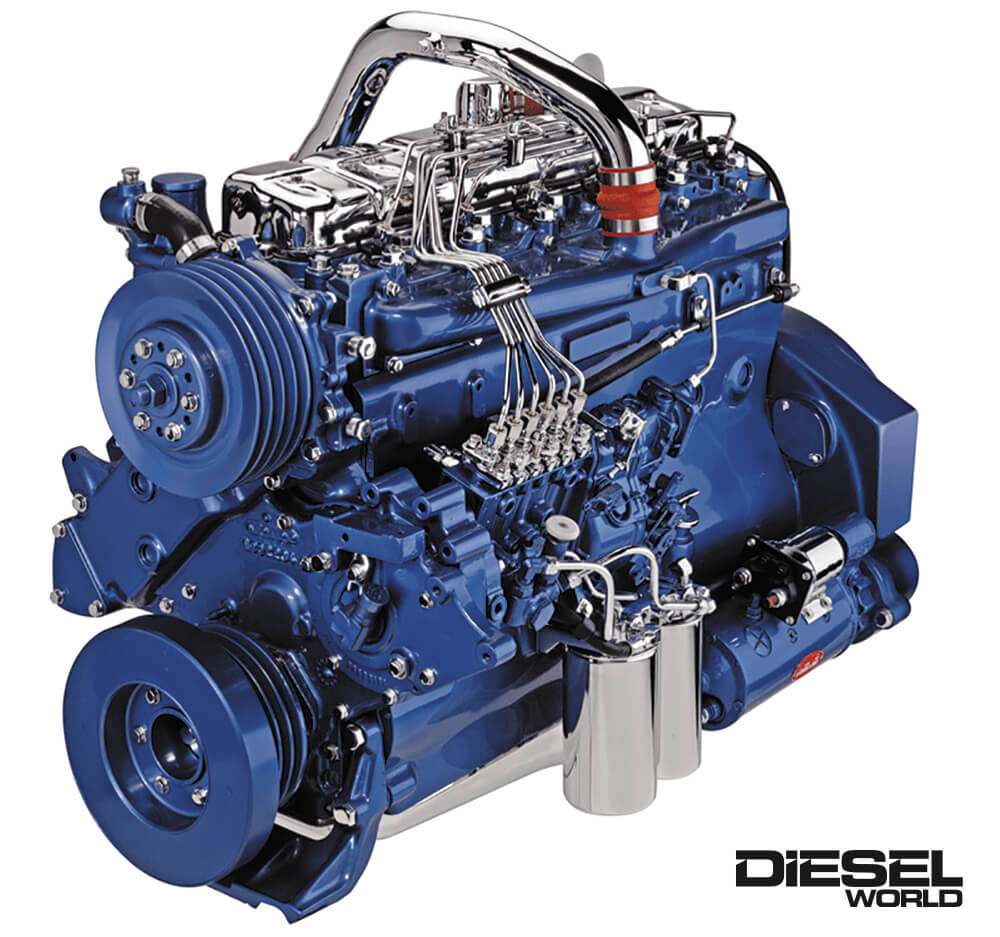
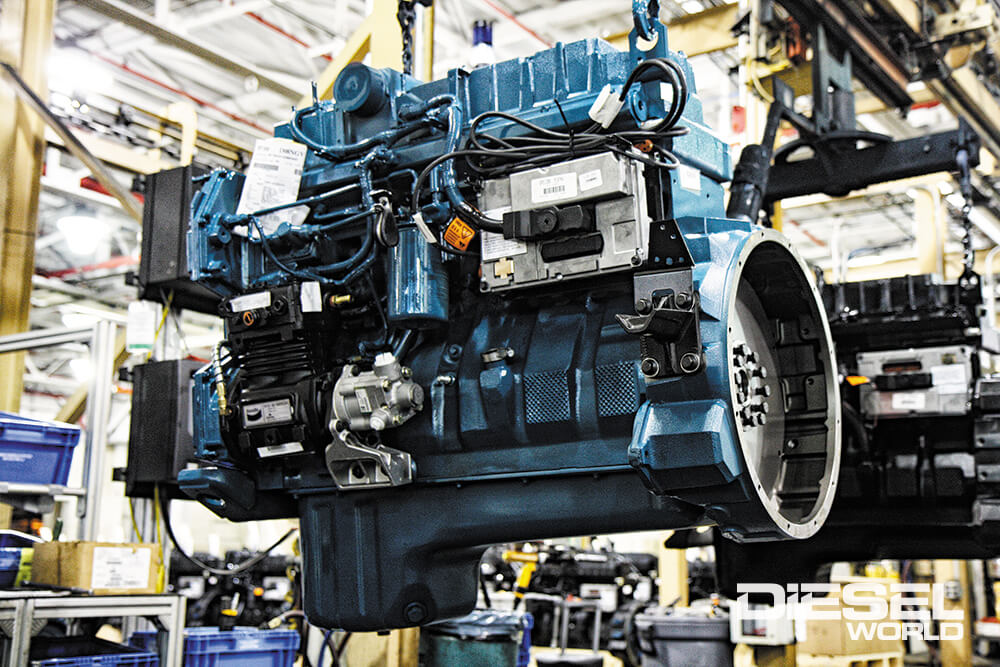
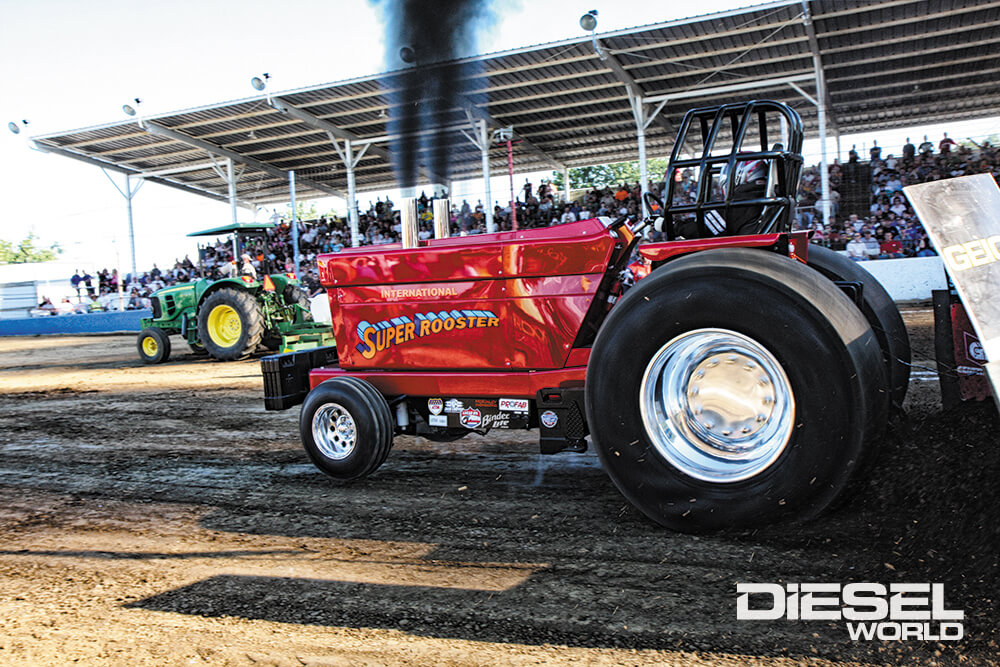
6BT Cummins
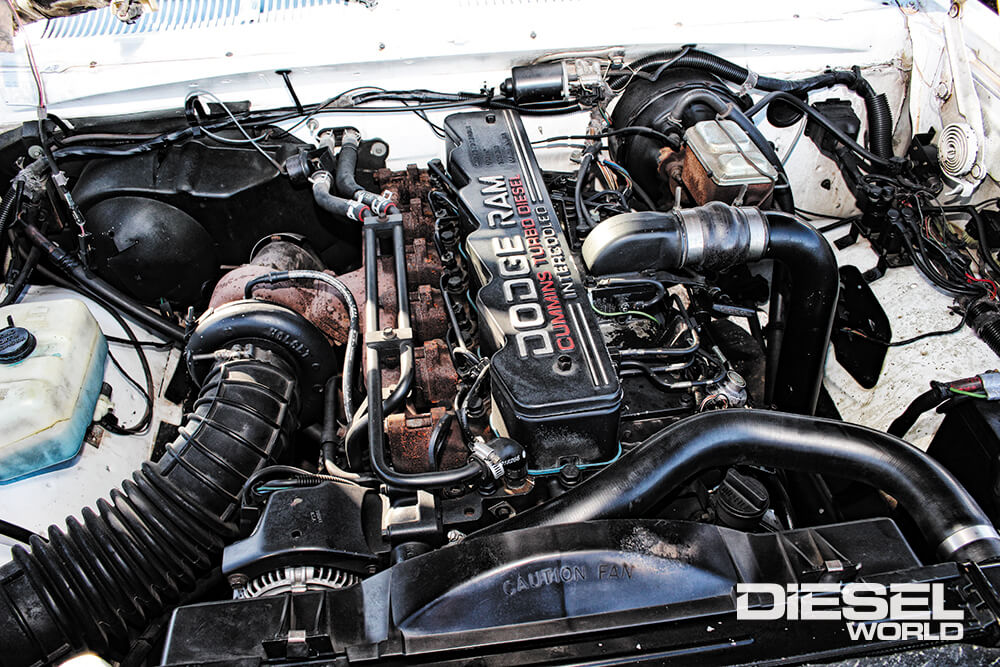
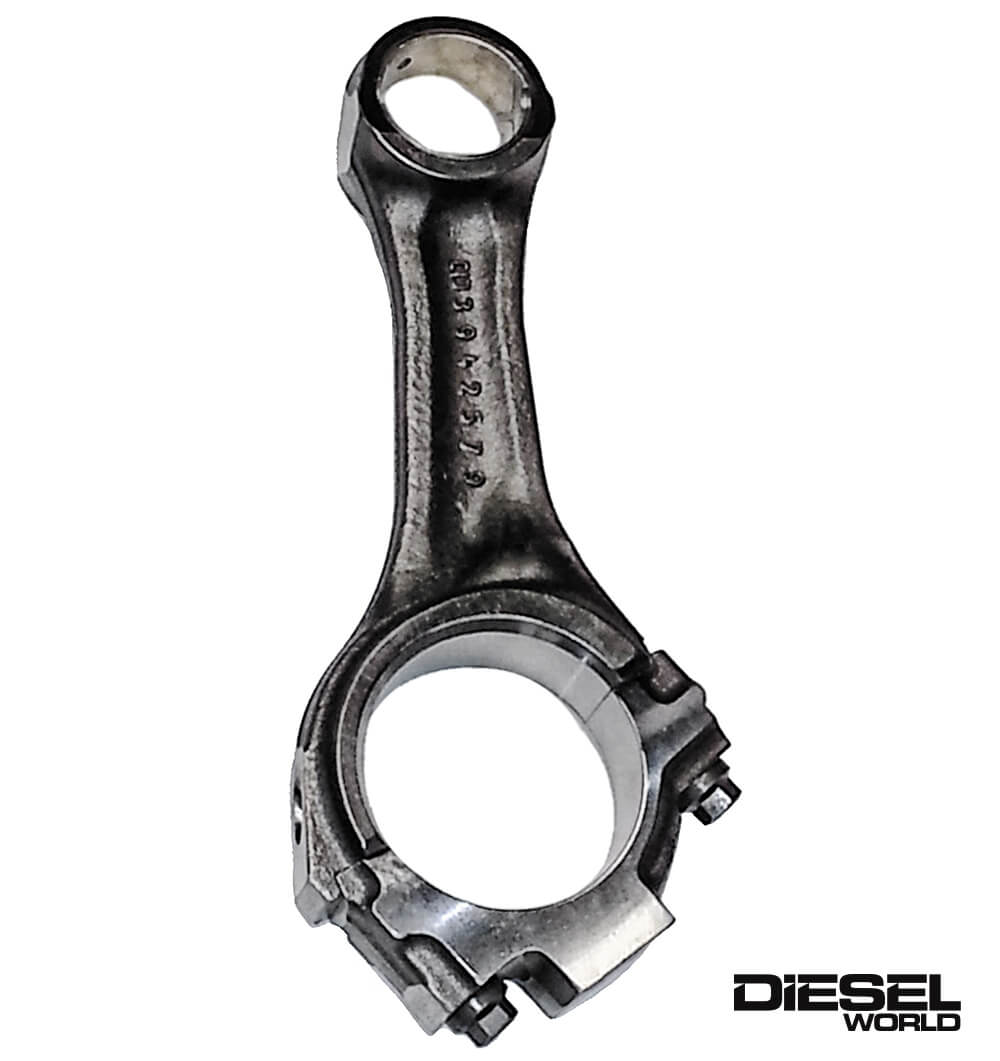
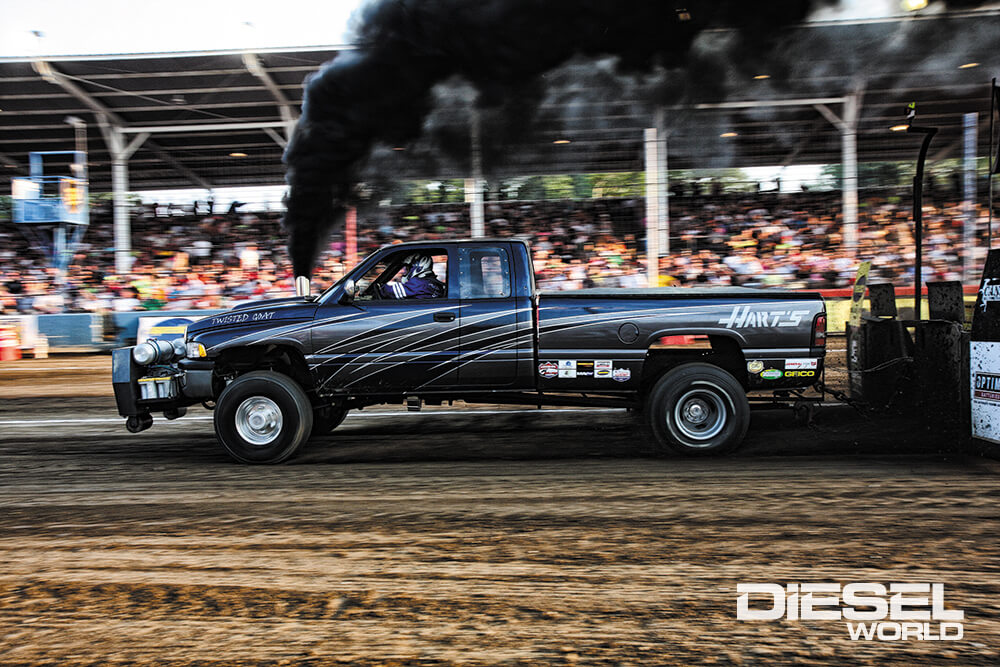
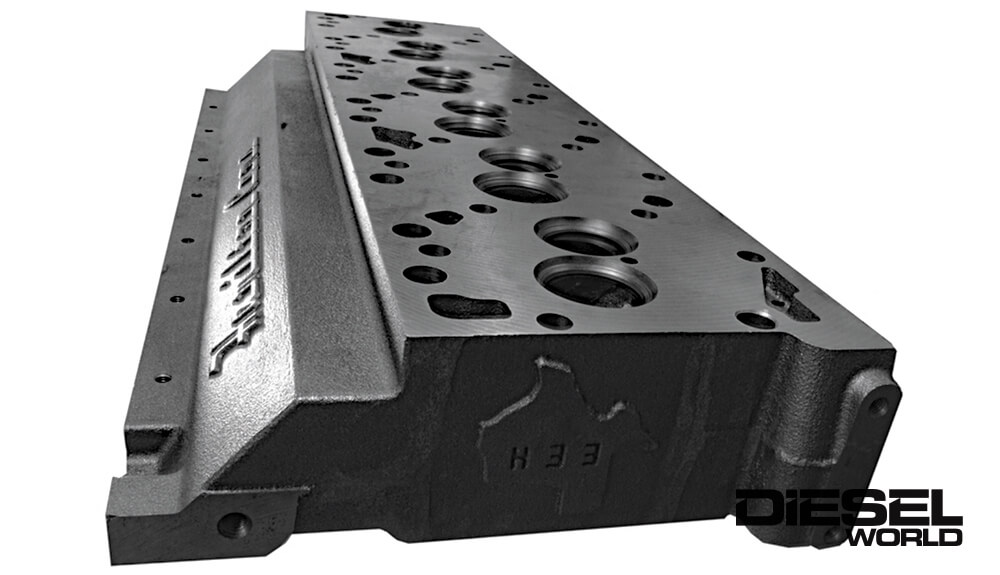
3406 CAT
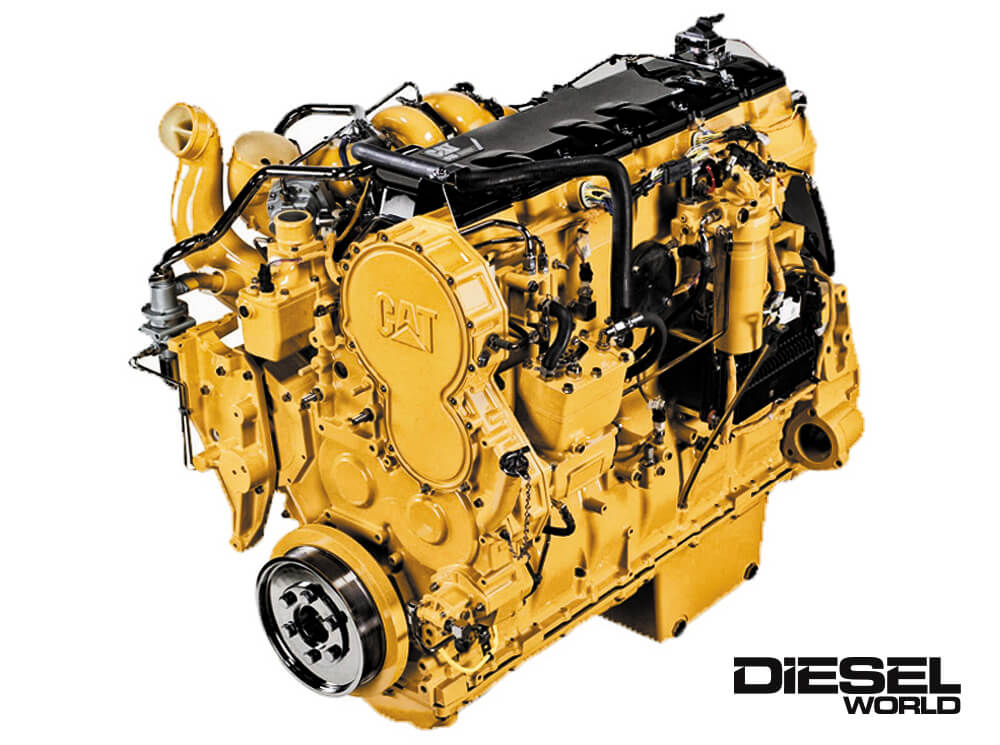
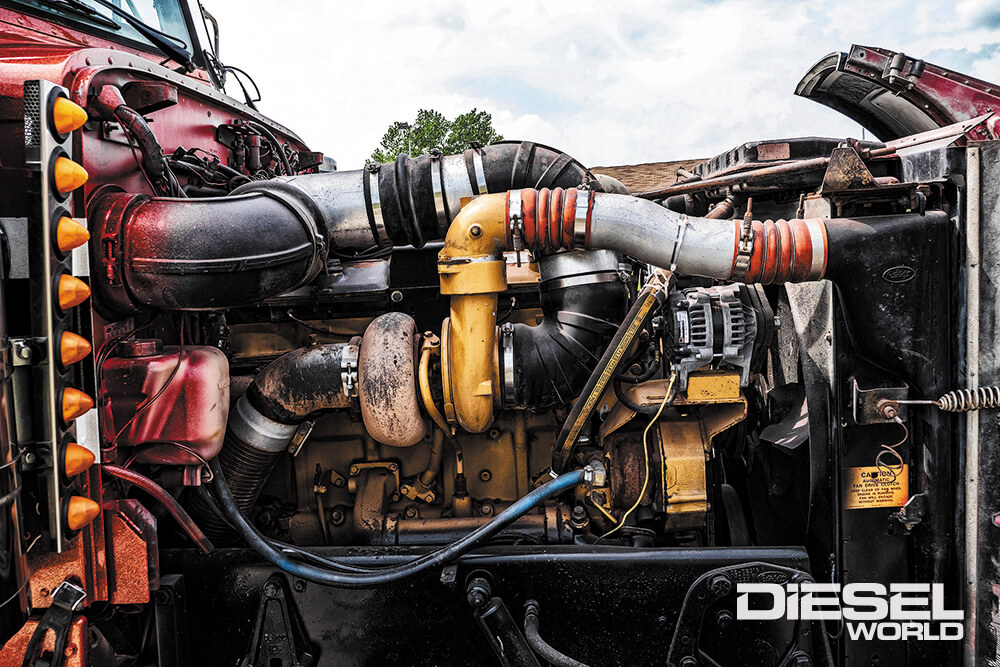
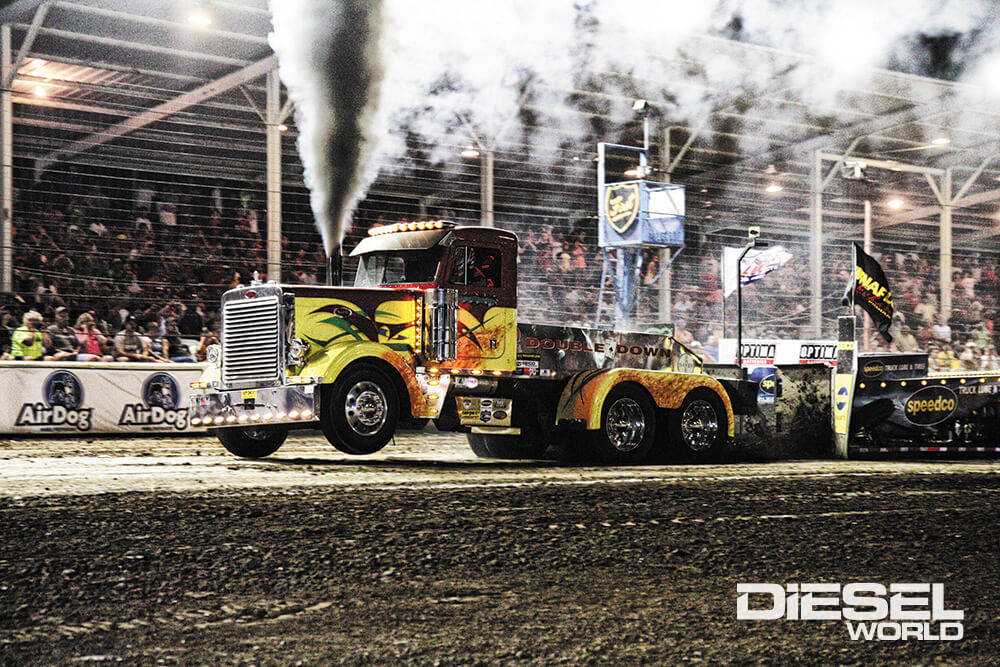
7.3L Power Stroke
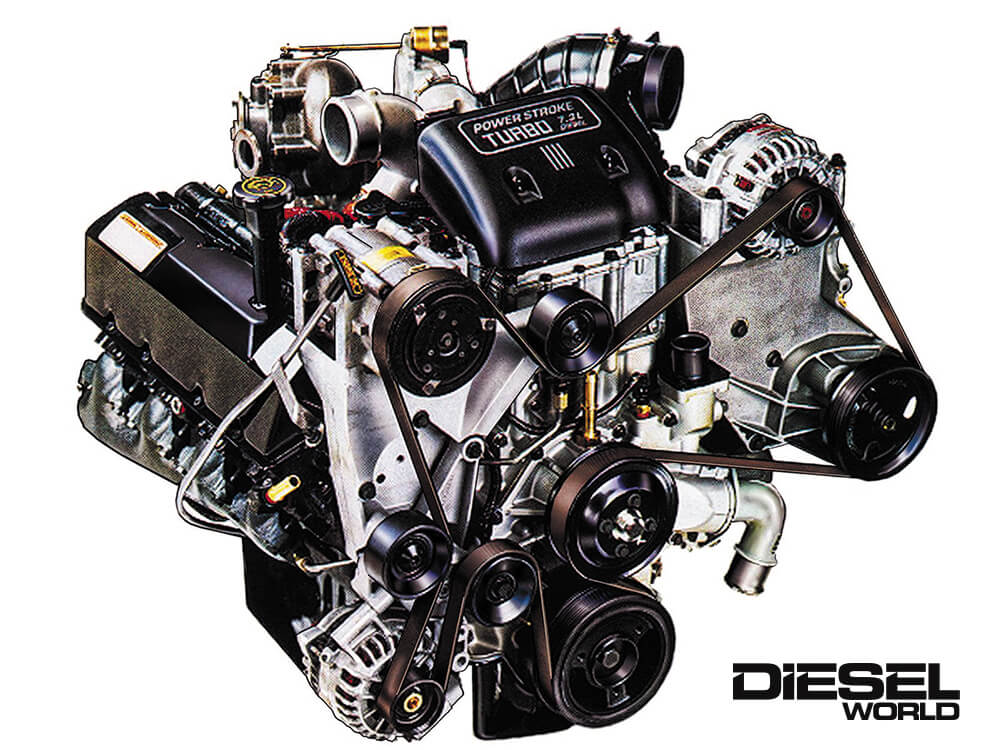
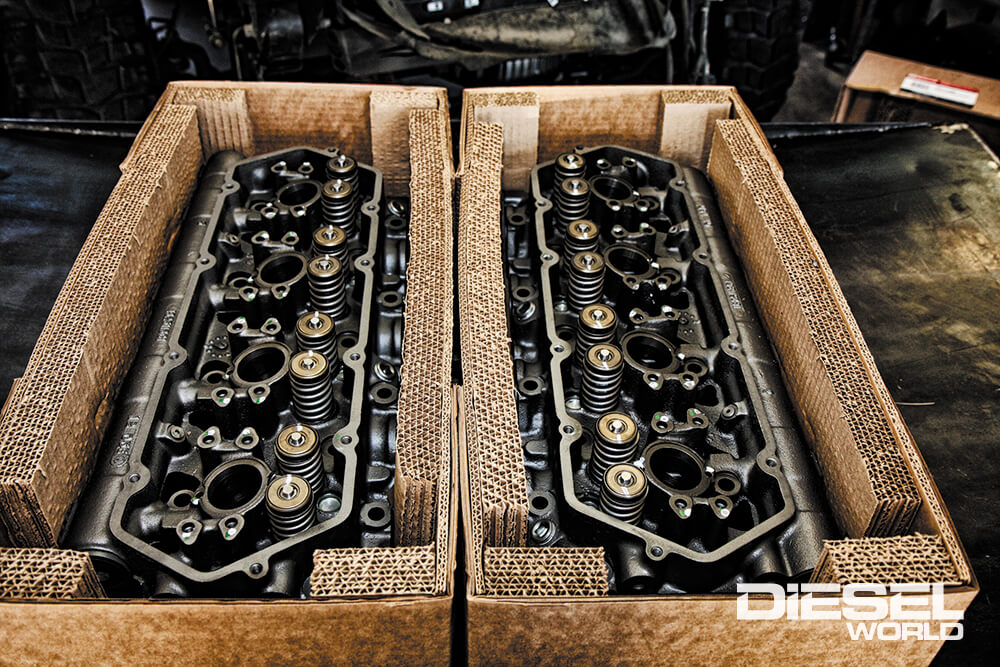
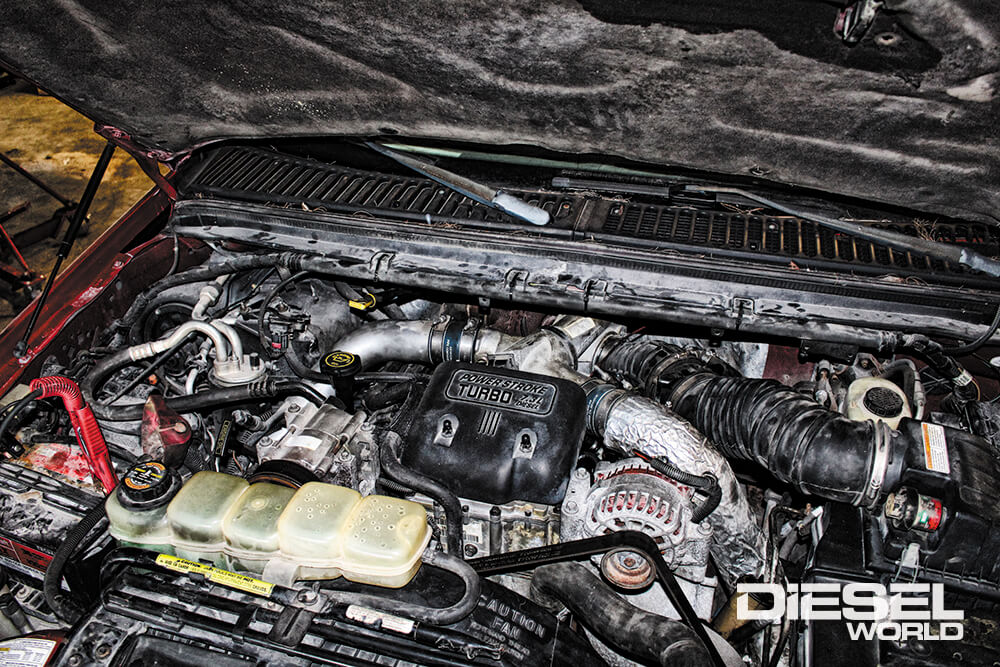
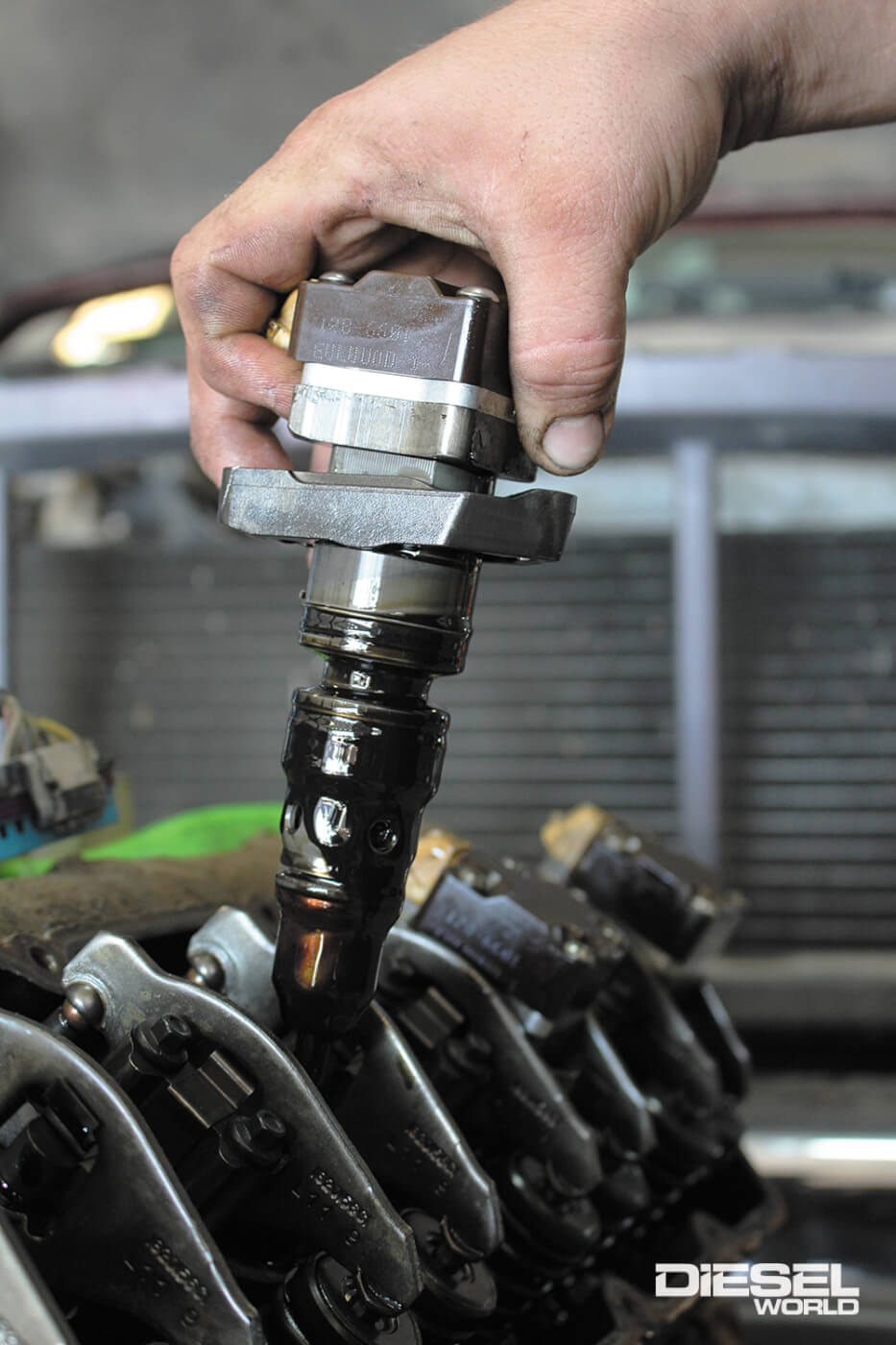
Cummins 855 Big Cam
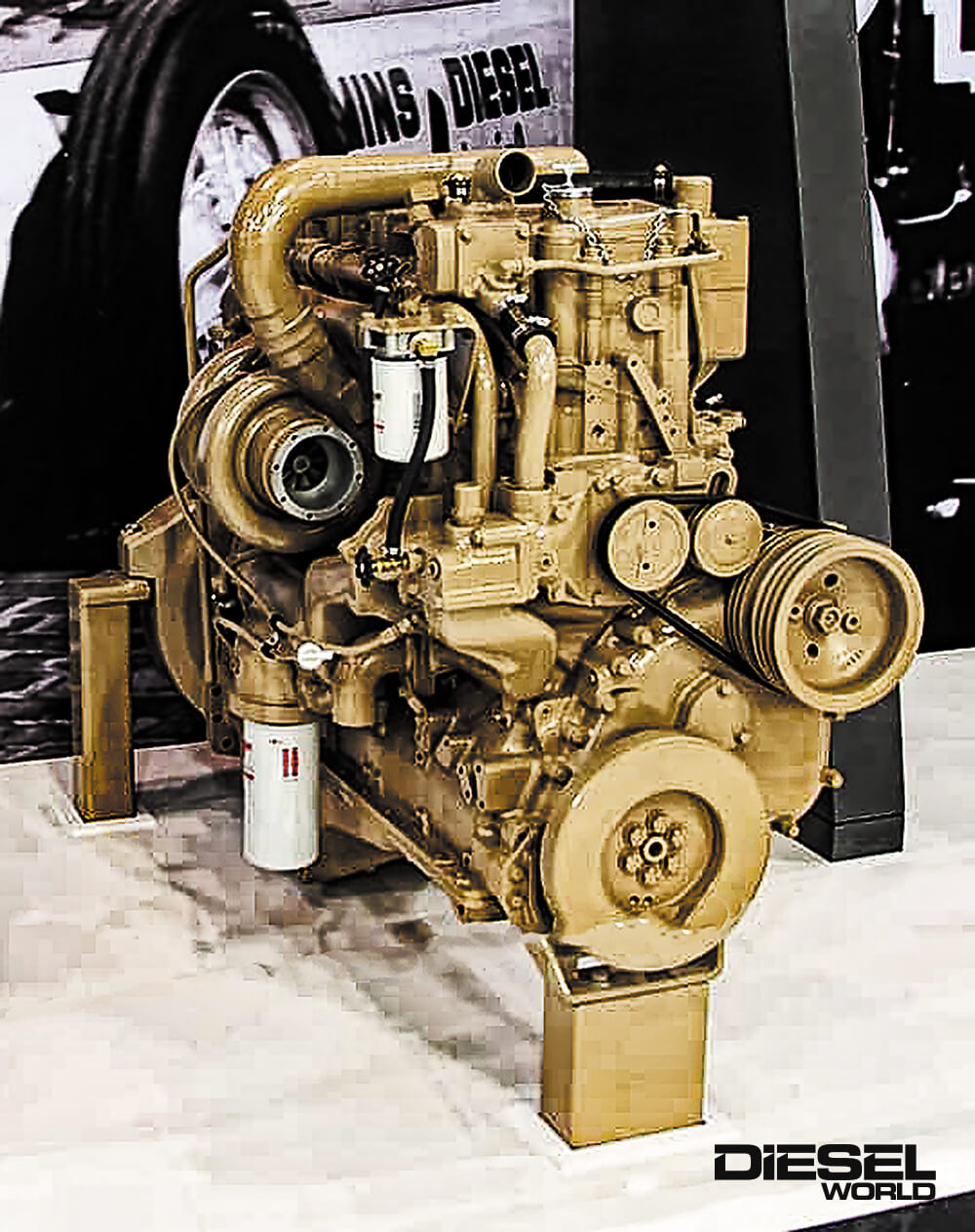
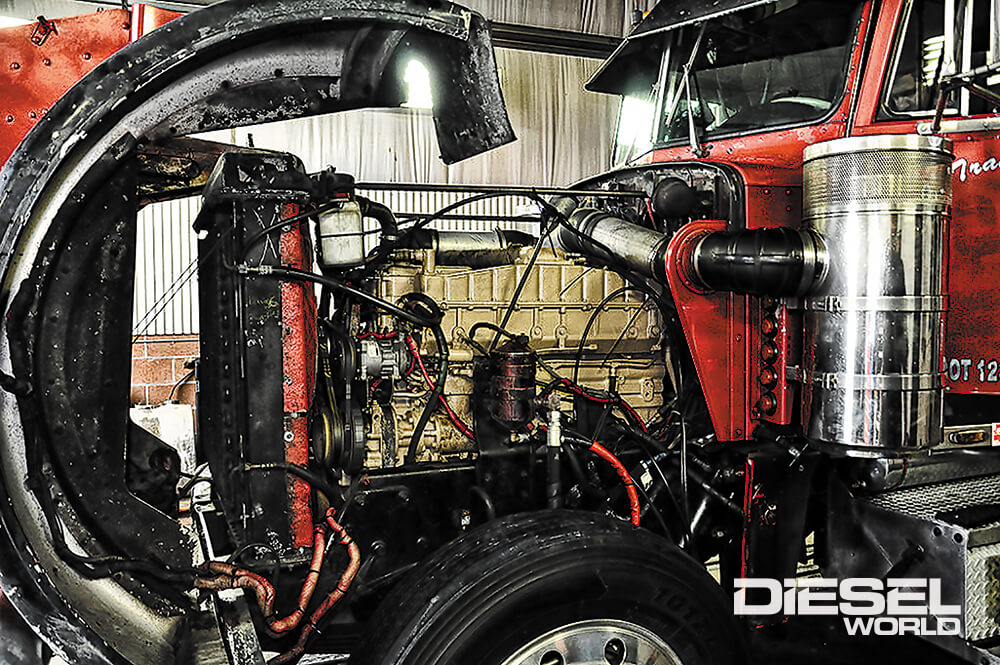
John Deere 50 Series 6-619
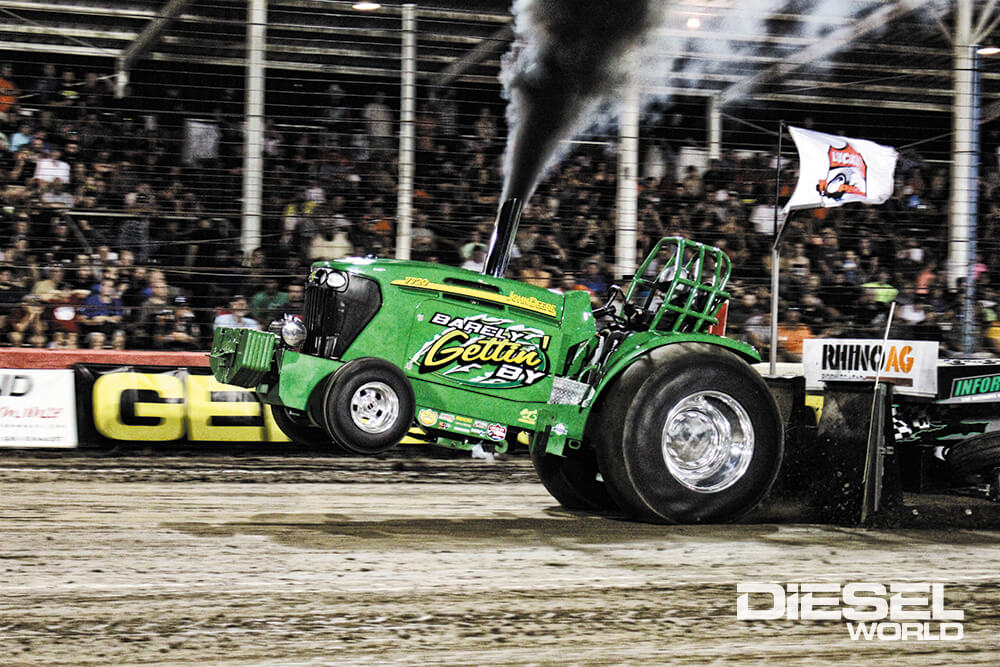

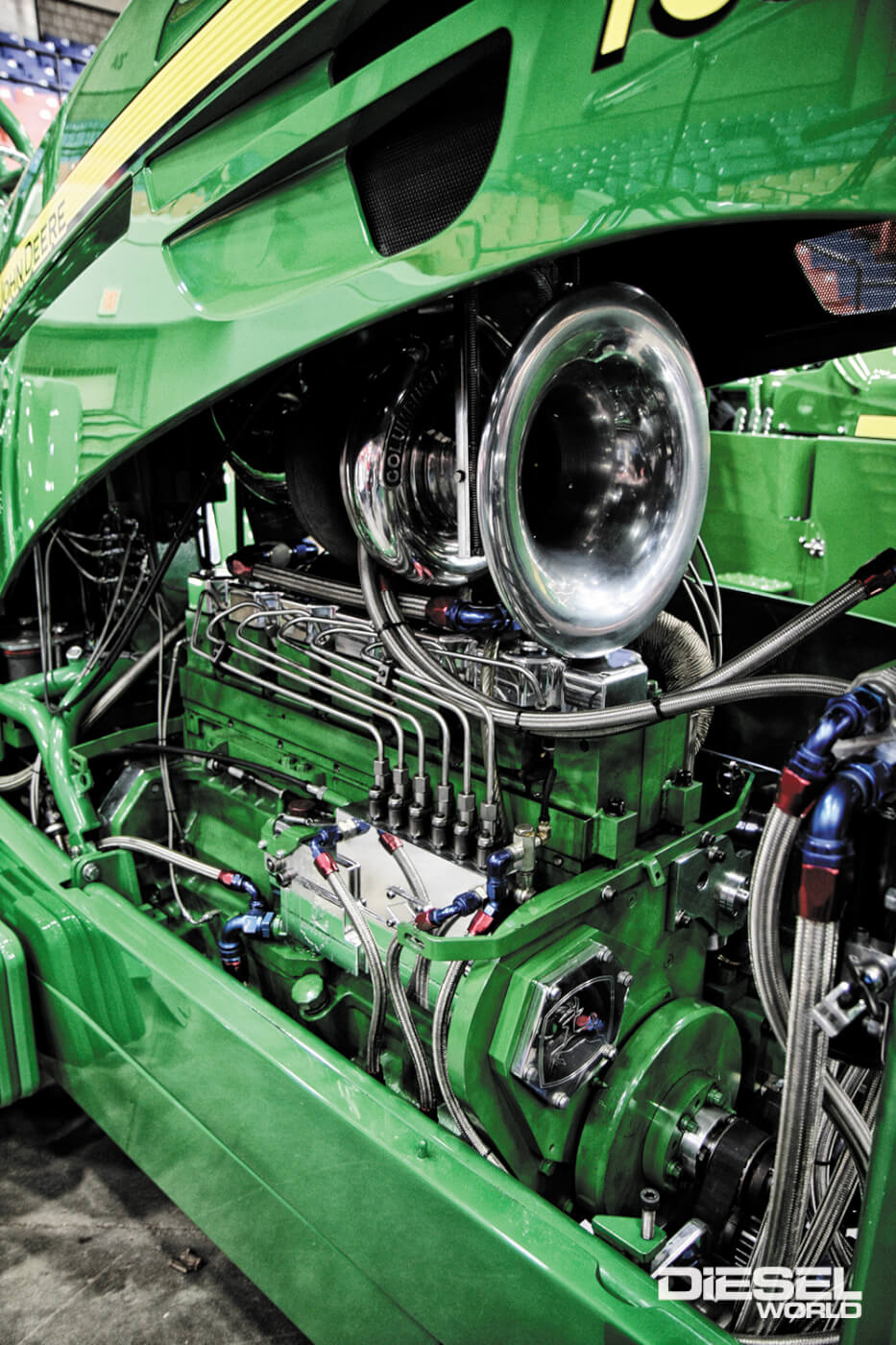
Mack E7
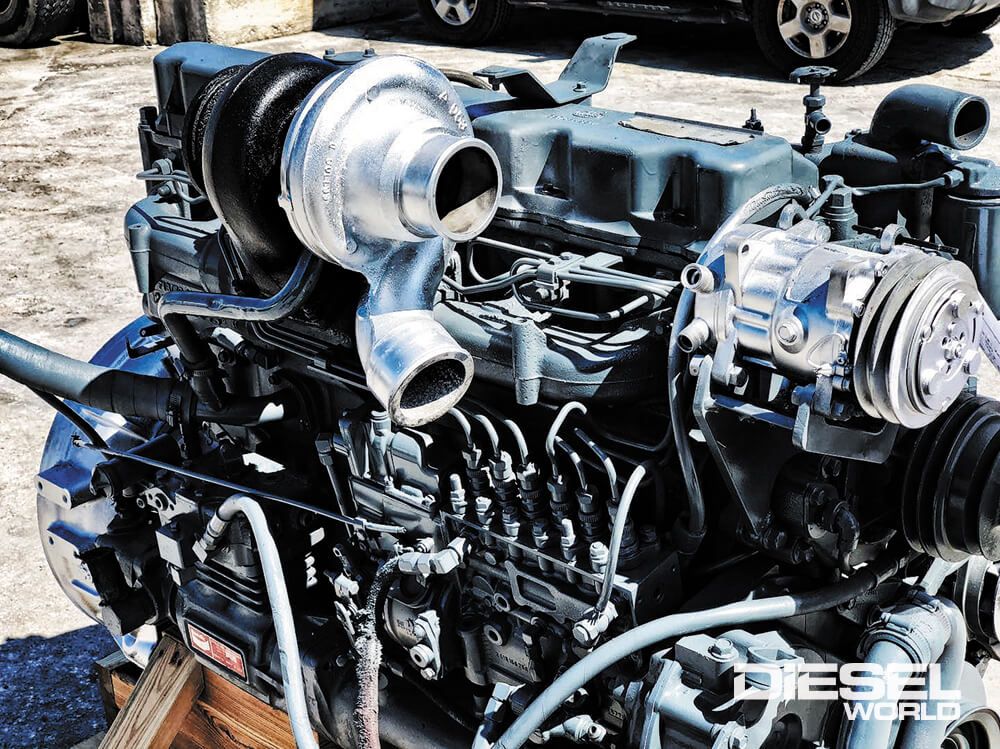
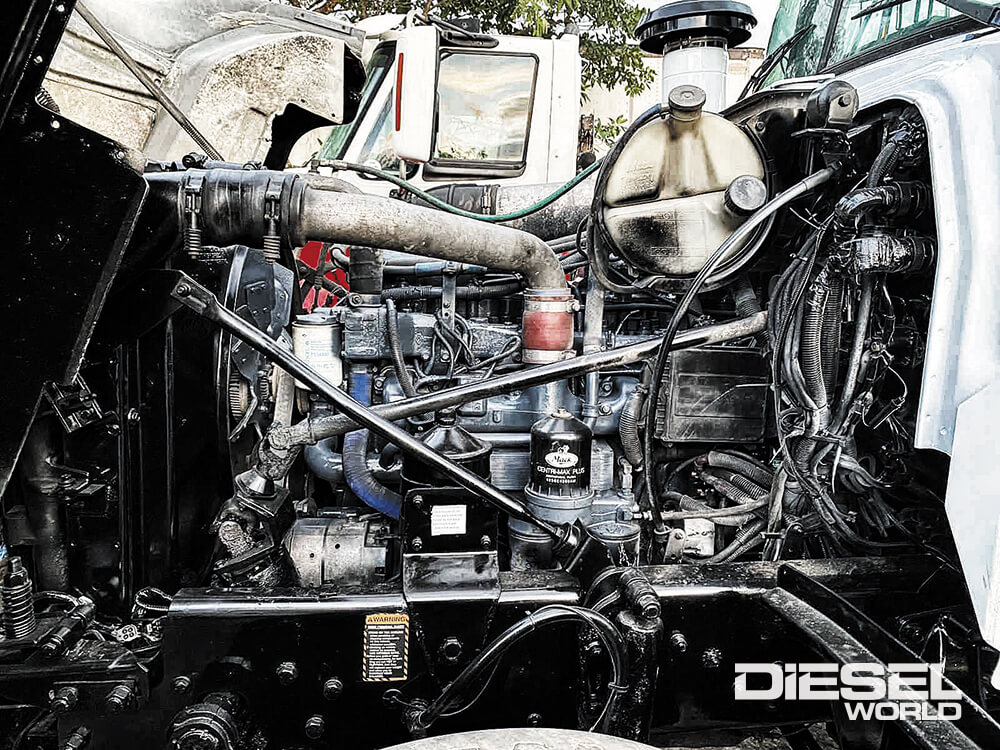
Detroit Diesel 60 Series
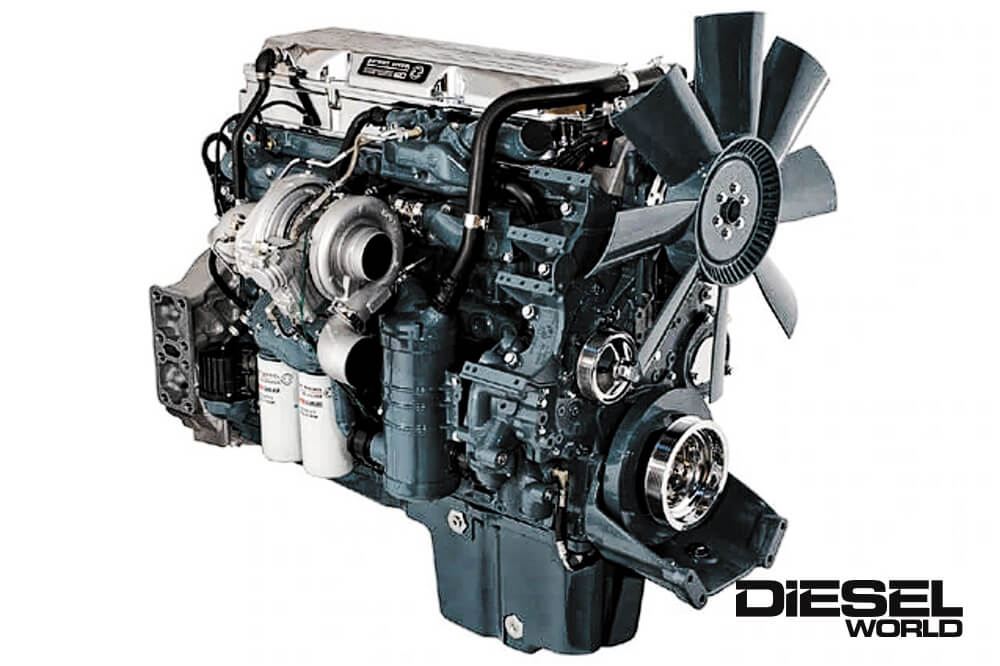
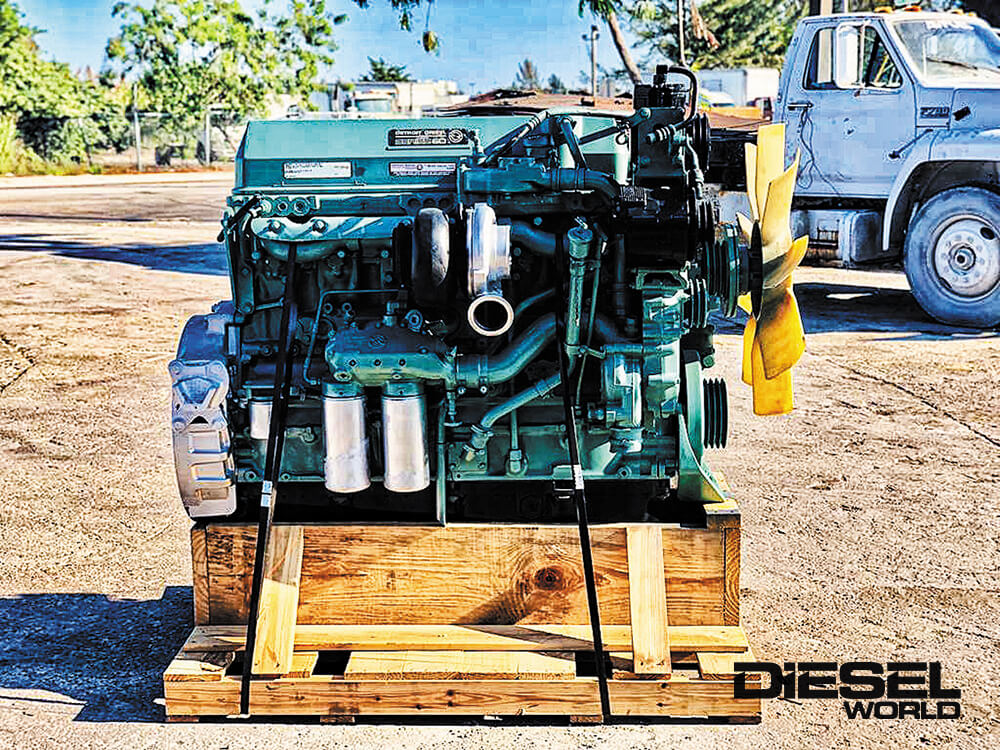
KTA Cummins
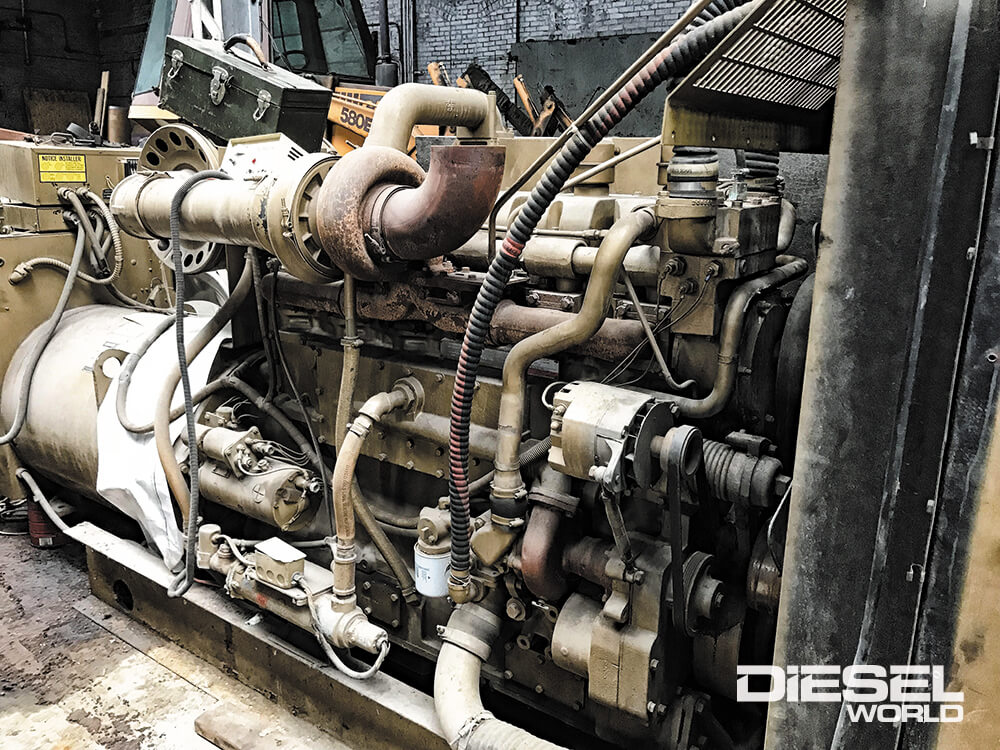
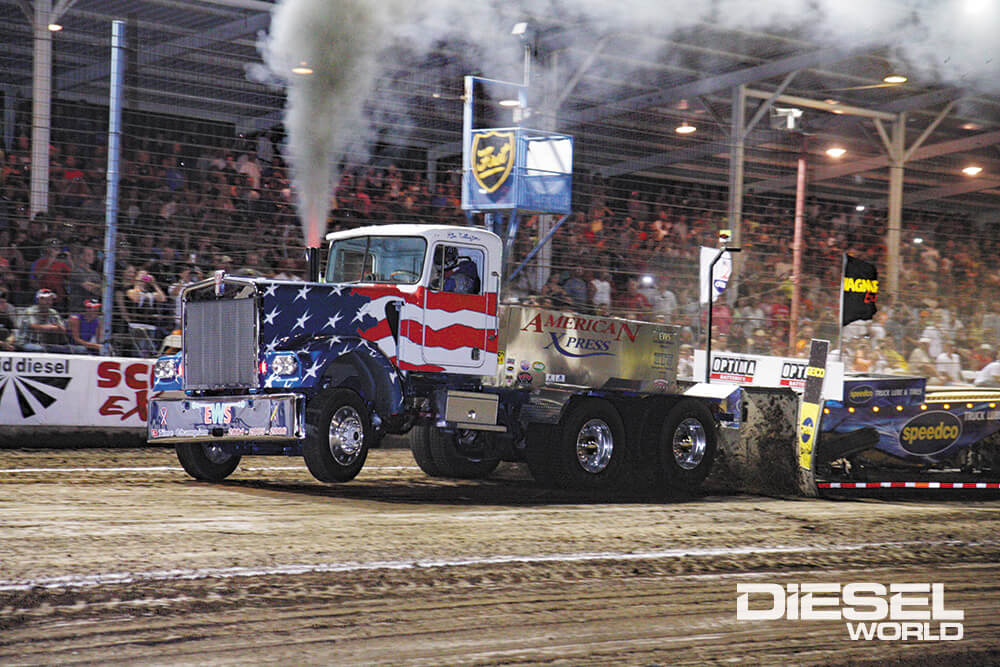
6.6L Duramax
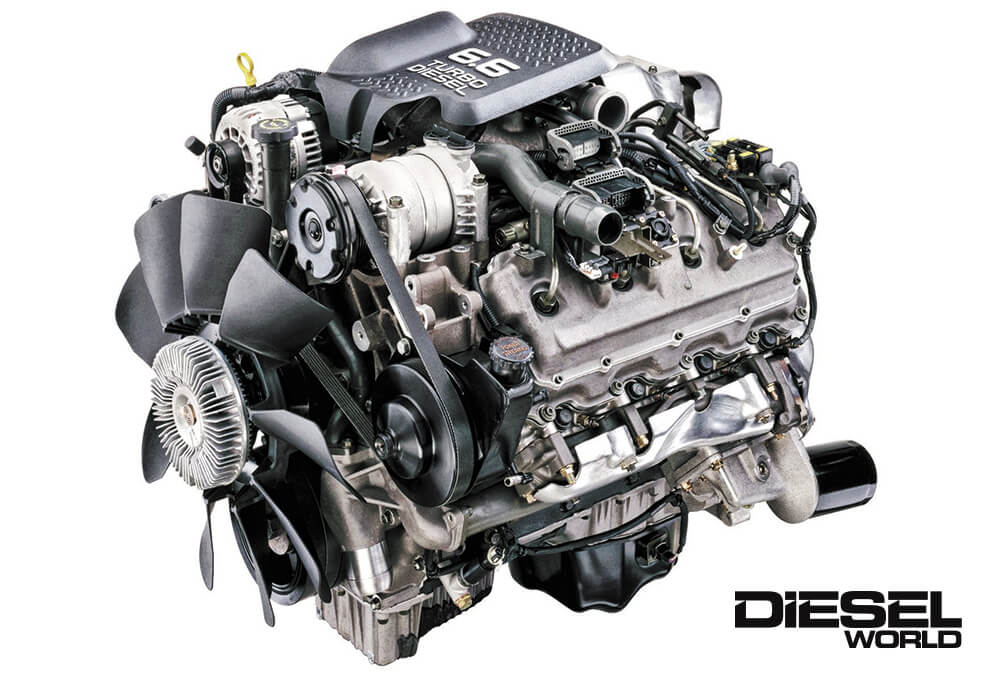
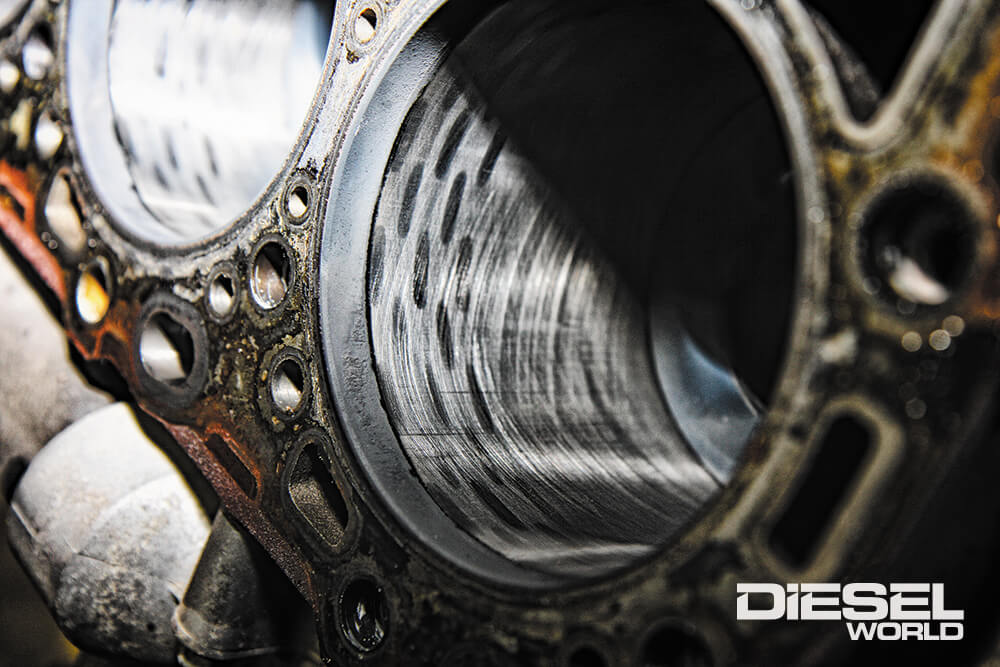
FREQUENTLY ASKED QUESTIONS
What are the advantages of diesel engines over petrol engines?
Diesel engines stand out over petrol engines for several compelling reasons:
Durability and Long Lifespan
One of the most significant advantages of diesel engines is their durability. These engines are primarily gear-driven, meaning critical components like oil and water pumps are less likely to fail quickly compared to their belt-driven counterparts. The reliance on gears, which are easier to maintain and repair, extends the engine’s lifespan significantly.
Efficiency Under Tough Conditions
Designed to handle extreme conditions, diesel engines are often used in heavy-duty applications worldwide. This means they are built to endure high stress and perform reliably in challenging environments, whether in construction, shipping, or agriculture.
Superior Combustion Process
Diesel engines utilize a unique combustion process where fuel is injected into the combustion chamber at high pressure. This method, known as spontaneous combustion, allows for efficient fuel utilization and reduces wear and tear on the engine parts, contributing to their longevity.
Fewer Maintenance Requirements
Thanks to their robust construction and efficient design, diesel engines require less frequent maintenance. When maintenance is necessary, it generally involves less complex repairs that can be managed more easily than those required for petrol engines.
Greater Fuel Economy
Diesel engines are known for their superior fuel efficiency. They extract more energy from the same volume of fuel compared to petrol engines, making them a cost-effective choice for long-distance travel and heavy use.
High Torque Generation
Diesel engines produce more torque than petrol engines at lower RPMs. This high torque is beneficial for tasks that require heavy pulling power, such as towing and hauling loads, making diesel engines the preferred choice for trucks and large vehicles.
By comprehensively understanding these advantages, it becomes clear why diesel engines are often the go-to option for demanding applications and long-term reliability.
Why do diesel engines last longer than petrol engines?
Understanding the Longevity of Diesel Engines
When comparing diesel engines to petrol engines, one significant advantage is their remarkable lifespan. But what makes diesel engines more durable?
Robust Design
Diesel engines are built with a gear-driven architecture, which enhances their reliability. Gears, unlike other mechanical components, are straightforward to maintain and repair. They also maintain their timing more effectively, reducing wear and tear.
Heavy-Duty Parts
Another contributing factor is the utilization of heavy-duty parts. Diesel engines often power machinery and vehicles in harsh environments worldwide. These engines are designed to withstand extreme conditions, contributing to their longevity.
Efficient Combustion
The combustion process in diesel engines differs significantly from that in petrol engines. Diesel engines use a method known as spontaneous combustion. In this process, diesel fuel is injected into the combustion chamber at high pressure and preheated. This efficient combustion process means that diesel engines don’t strain as much, leading to extended durability.
Gear-Driven Pumps
Many diesel engines incorporate gear-driven oil and water pumps, which wear out more slowly than belt-driven counterparts. This slower rate of failure means that essential components of the engine are maintained in better condition over a longer period.
Summary
In essence, the durability of diesel engines comes down to their robust design, the use of heavy-duty parts, efficient combustion, and gear-driven components. These attributes make diesel engines a reliable choice for long-term use, especially in challenging environments.
What are the best diesel trucks for long-lasting performance and easy maintenance?
Top Diesel Trucks for Longevity and Simplified Maintenance
When on the hunt for a used truck that can stand the test of time and require minimal upkeep, certain models stand out due to their robust build and lasting performance. Below are some top picks that deliver durability and ease of maintenance.
Dodge Ram HD
Known for its rugged reliability, the Dodge Ram HD series is a solid choice for those seeking a truck that can handle tough conditions. The 2003-2004 models are especially noteworthy, featuring a 5.9L Cummins engine that can tow up to 12,000 lbs. This model is revered as a reliable workhorse that won’t leave you stranded.
Dodge W250
Not many people are familiar with the Dodge W250, but it’s a hidden gem in the diesel truck world. First introduced in 1989, this model includes a Cummins 6-cylinder engine enhanced with an intercooler and overdrive transmission, making it nearly indestructible. Although tracking down a W250 might be challenging, its simple and durable design makes it easy to maintain once acquired.
1999 Ford Super Duty
The 1999 Ford Super Duty is a classic example of Ford’s engineering excellence. Equipped with a durable Power Stroke engine, this truck includes a factory intercooler, forged steel connecting rods, and a high-pressure oil pump. It’s also highly modifiable, with abundant aftermarket parts that can boost its horsepower beyond 500, making it both practical and powerful.
2008 Ford F-250
Choosing a single Ford F-250 model is difficult due to their consistent reliability, but the 2008 edition stands out. Featuring a 6.4L Power Stroke turbocharged engine, this model is a favorite for its modifiability. The stock engine produces 350 horsepower and 650 lb-ft of torque, and with some tuning and simple upgrades, you can easily push it beyond 600 horsepower. Its robust design and popularity in the aftermarket make it a must-have for truck enthusiasts.
Key Features for Long-Lasting Performance and Maintenance
- Engine Durability: Look for models with well-regarded engines like the Cummins or Power Stroke.
- Modifiability: Trucks that support easy modifications provide long-term usability.
- Component Quality: Features such as factory intercoolers and forged steel connecting rods indicate a strong build.
- Parts Availability: Choose models with readily available aftermarket parts for easier upgrades and repairs.
- Towing Capacity: High towing capacities often indicate a stronger, more durable truck.
Choosing a diesel truck from these recommendations ensures you get a vehicle that’s built to last and won’t require constant, costly maintenance. Consider these models for their proven track record and robust performance.
What are some of the best diesel trucks of all time that can be purchased second-hand?
Best Diesel Trucks of All Time to Buy Second-Hand
Searching for a Reliable Used Diesel Truck?
When it comes to picking a second-hand diesel truck, you want performance, durability, and reliability. Here are some top-notch diesel trucks that hold their own even years after hitting the market.
Iconic American Workhorse: Dodge Ram HD
Known for its ruggedness, the Dodge Ram HD is a steadfast choice. The model years between 2003-2004 are particularly outstanding, featuring a robust 5.9L Cummins engine capable of towing up to 12,000 lbs. If you’re looking for a truck that can handle heavy lifting and rough terrain, this is a solid option.
The Underrated Gem: Dodge W250
Many may not recognize the Dodge W250, but this model is a sleeper hit among diesel trucks. Introduced in 1989 with a Cummins 6-cylinder engine, it gained a reputation for durability, thanks to upgrades like an intercooler and an overdrive transmission. While finding one might be a challenge, its reliability makes it worth the hunt.
The Modifiable Powerhouse: 1999 Ford Super Duty
Ford’s Super Duty trucks are legends in their own right, and the 1999 model stands out. Equipped with a sturdy power stroke engine, factory intercooler, forged steel conrods, and a high-pressure oil pump, this truck promises robust performance. An added bonus is its ease of modification, with abundant aftermarket parts to boost its horsepower well beyond standard.
The Versatile Beast: 2008 Ford F-250
The 2008 Ford F-250 is a favorite among truck enthusiasts, thanks to its 6.4L power stroke turbocharged engine. Straight out of the factory, it delivers 650 lb-ft of torque and 350 HP. However, it shines in its modifiability; with simple tweaks like a new intake and exhaust, you can push its power beyond 600 HP. This model is a top pick for anyone looking to maximize both utility and performance.
Conclusion
These second-hand diesel trucks offer a blend of reliability, power, and modifiability. Whether you need a workhorse for heavy lifting or a versatile beast that you can customize, any of these models will serve you well for years to come.
What are the specifications and benefits of the Caterpillar C-12 diesel engine?
Specifications and Benefits of the Caterpillar C-12 Diesel Engine
The Caterpillar C-12 diesel engine is a powerhouse known for its versatility and strength. This six-cylinder, twin-turbocharged inline engine boasts impressive specifications:
- Horsepower: 1400 HP
- Torque: 3400 lb-ft
Key Specifications
- Configuration: Inline six-cylinder
- Aspiration: Twin-turbocharged
- Horsepower: 1400 HP
- Torque: 3400 lb-ft
Benefits
- Versatility: The C-12 is capable of powering a diverse range of heavy-duty equipment, from ships to cranes.
- High Performance: With 1400 horsepower and 3400 lb-ft of torque, this engine delivers exceptional pulling and moving capabilities.
- Reliability: Built for durability, the C-12 is designed to operate smoothly in the most demanding environments, providing consistent performance and reducing downtime.
Whether you need to mobilize a vessel or lift heavy loads with a crane, the Caterpillar C-12 diesel engine offers the robust power and reliability you need to get the job done efficiently.
What sets the 2008 Ford F-250 diesel truck apart from other models?
Choosing the best diesel truck isn’t easy, given the stiff competition across various years. Yet, the 2008 Ford F-250 stands out for several compelling reasons.
Unique Engine Features
The 2008 model is equipped with a 6.4L Power Stroke, turbocharged engine. This engine is particularly favored by enthusiasts for its outstanding capacity to be modified. Unlike other models, this engine offers:
- Ease of Modification: Many gearheads appreciate how simple it is to tune the engine and upgrade parts like the intake and exhaust.
- High Performance: The base model already provides impressive power, boasting 650 lb-ft of torque and 350 horsepower. With modifications, this engine can push beyond 600 horsepower.
Popularity Among Enthusiasts
What also sets the 2008 F-250 apart is its status among truck and off-road enthusiasts. This model has become a go-to option for those who love to modify their vehicles. Sales figures for this model have consistently reflected its popularity.
Notable Modifications
When it comes to enhancing performance, the 2008 F-250 offers several upgrade options that can bring its already significant power to new heights:
- Engine Tuning: Simple adjustments to the engine’s computer settings can yield dramatic performance improvements.
- New Intake Systems: Upgrading to a high-performance air intake can significantly boost horsepower.
- Exhaust Upgrades: A better exhaust system not only improves power but also enhances the truck’s sound.
Conclusion
In summary, the 2008 Ford F-250 diesel truck sets itself apart with its highly modifiable 6.4L turbocharged engine, its immense popularity in the community, and its potential for significant power upgrades. Whether you’re a gearhead or an off-road enthusiast, this model offers something truly unique.
What are the features and benefits of the 1999 Ford Super Duty diesel truck?
Features and Benefits of the 1999 Ford Super Duty Diesel Truck
The 1999 Ford Super Duty diesel truck is packed with features that set it apart in the truck market, making it not only a reliable workhorse but also a customizable powerhouse. Here’s a look at what makes this truck a standout choice:
Key Features
- Powerful Engine:
The truck is equipped with a robust Power Stroke diesel engine, renowned for its strength and durability. It includes a factory-installed intercooler, forged steel connecting rods, and a high-pressure oil pump to ensure efficient lubrication. - Aftermarket Modifications:
The 1999 Super Duty is particularly easy to modify. With a wealth of aftermarket parts available, enthusiasts can easily push the horsepower beyond 500, customizing the truck to their specific needs and preferences. - Wide Availability:
Due to its popularity, finding a 1999 Ford Super Duty is both practical and cost-effective. Many units are available on the market, providing a great selection for any buyer.
Benefits
- Durability and Reliability:
The advanced engine components, like the forged steel conrods and high-pressure oil pump, contribute to the truck’s long lifespan and robust performance. This truck is built to endure tough conditions, making it a dependable option for heavy-duty tasks. - Cost-Effectiveness:
The widespread production and popularity of this model help keep prices reasonable. This makes the Super Duty an economical option for those needing a strong, reliable truck without breaking the bank. - Customization Potential:
For those who love to tinker and tailor their vehicle, the Super Duty’s compatibility with numerous aftermarket parts offers endless possibilities. Whether you’re looking to boost performance or add personal touches, this truck can be modified to meet your exact requirements.
The 1999 Ford Super Duty diesel truck combines robust features with practical benefits, making it a well-rounded choice for anyone in need of a powerful and reliable vehicle.
What makes the Dodge W250 diesel truck special?
The Dodge W250 stands out as a unique gem among diesel trucks for several compelling reasons.
- Pioneering Diesel Engine:Introduced with a Cummins 6-cylinder diesel engine in 1989, this model was among the first in its class to feature such robust diesel power.
- Enhanced Performance:What truly sets the W250 apart is its upgraded engine. This model boasts an intercooler and an overdrive transmission, enhancements that significantly improve its durability and performance.
- Longevity and Reliability:Known for its practically indestructible build, the W250 has a reputation for enduring tough conditions and maintaining reliability, making it highly sought-after among diesel truck enthusiasts.
- Rarity:As the years go by, finding a W250 has become increasingly challenging. Its rarity only adds to its allure and value.
- Cost and Maintenance:While it might demand a higher price due to its scarcity, owners find it relatively easy to maintain compared to other diesel trucks. The W250’s straightforward design facilitates simpler repairs and upkeep.
In summary, the Dodge W250’s combination of pioneering diesel technology, performance upgrades, exceptional durability, rarity, and ease of maintenance makes it a standout choice for diesel truck aficionados.
What are the features and capabilities of the Dodge Ram HD diesel truck?
Features and Capabilities of the Dodge Ram HD Diesel Truck
The Dodge Ram HD diesel truck is renowned for its rugged reliability and outstanding performance. This workhorse is engineered to tackle a wide range of challenges, making it a favorite among truck enthusiasts and professionals alike.
Engine Power
Equipped with a robust 5.9L Cummins engine, this truck delivers remarkable power, enabling it to tow up to 12,000 lbs. Whether you’re hauling heavy equipment or a trailer, the Dodge Ram HD handles the job with ease and efficiency.
Durability and Build
The truck’s design emphasizes durability. Constructed to endure tough conditions, it features a resilient frame that stands up to the rigors of daily use. This reliability ensures you won’t be left stranded, no matter where your journey takes you.
Versatility
There are numerous models and configurations available, catering to various needs and preferences. The 2003-2004 editions, in particular, have garnered praise for their exceptional build quality and performance.
Off-Road Capabilities
Thanks to its advanced suspension system and powerful drivetrain, the Dodge Ram HD can navigate rough terrain smoothly. This makes it an ideal choice for both off-road adventures and demanding work environments.
Load Capacity
Aside from its impressive towing capacity, the truck also boasts a substantial payload capacity. This means you can carry more gear, materials, or tools without compromising on performance.
Comfort and Technology
Inside, the cabin offers a blend of comfort and technology. Features such as ergonomic seats, intuitive controls, and modern infotainment systems ensure a pleasant driving experience, even on long hauls.
If you’re in the market for a truck that combines power, durability, and versatility, the Dodge Ram HD diesel truck stands out as a top contender.
Why are diesel engines preferred for trucks and pickups in tough conditions?
From the farm to the highway, construction equipment to gen-sets, and emergency vehicles to the trucks we drive every day, diesels have built—and continue to build—America. Even beyond our borders, in every mechanized blue-collar segment of the world, you’ll find a diesel in charge of the lion’s share of the workload.
Diesel engines are also used in applications around the world where conditions are tough and there’s a reliance on heavy-duty parts to withstand these tough conditions. This is why they are preferred for trucks and pickups operating in harsh environments—they offer unmatched reliability and durability.
And although it goes without saying that all engine manufacturers strive to turn out the best product possible for every application, some power plants are simply better than others. Be it due to their durability, mechanical simplicity, or horsepower potential, these oil-burners are a cut above the rest—and we have 10 of the best diesels ever concocted to tell you about in the pages that follow.
How can modifying a diesel engine enhance its performance?
Not only did the B-series 5.9L Cummins, the 6BT, revolutionize the pickup truck segment, it made it possible for a magazine like this to exist. Without it, the diesel industry wouldn’t have exploded the way it did and Diesel Worldmight not have even been created. That’s how instrumental the 5.9L Cummins was in the expansion of the diesel marketplace.
The 12-valve Cummins brought an I-6 design, direct-injection technology, and turbocharging to the ¾-ton and larger truck segment when it arrived in the summer of ’88, and Ford and GM have arguably been playing catch-up with the Chrysler/Cummins alliance ever since. One look at the 6BT’s connecting rods and you start to see why this overbuilt inline-six was capable of lasting a million miles, or surviving four-digit horsepower. Each forged-steel I-beam rod gets its own rod bearing journal (each one separated by a main bearing journal) and sports a 1.57-inch diameter floating wrist pin on the small end. When treated to shot peening, micro-polishing, and ARP rod bolts, these rods can live at 1,400-hp and more than 2,000 lb-ft of torque. The forged-steel and induction-hardened crankshaft is secured via 14mm main cap bolts, while the cylinder head employs six bolts per cylinder in its attachment to the cast-iron block.
Though the 6.7L Cummins block, with the added strength that comes with its Siamese cylinder bores, is the favored crankcase for high-horsepower at the present time, the 5.9L block is still a viable option all the way up to 1,400-1,500 hp. Granted, the 5.9L’s threshold for horsepower is lower than that in street applications, but we’ve seen more than our fair share of them in the 1,100 to 1,200hp range. Simple yet proven, the 6BT Cummins’ crossflow, 12-valve cylinder head was cast from gray iron. However, its induction-hardened valve seats and ductile iron intake and exhaust valve rockers (not the common stamped steel type) suggest that it was built for the long-haul. In the world of diesel motorsports, the 12-valve head (and its aftermarket variants) is the weapon of choice. When treated to extensive porting (via CNC and/or by hand) and oversize valves, it can flow more than 300 cfm per cylinder (vs. 140-150 cfm stock).
Modifying the 6BT Cummins for Enhanced Performance
For those looking to push the limits of their diesel engines, the 5.9L Cummins offers substantial room for modifications that can significantly enhance performance. Starting with an already robust engine, enthusiasts can achieve remarkable results with specific upgrades.
- Tuning the Engine: By simply tuning the engine, you can optimize fuel delivery and ignition timing, resulting in noticeable power gains. Custom tunes tailored to your setup can take the 6BT to new heights.
- Upgrading Intake and Exhaust Systems: Installing a high-flow intake and an upgraded exhaust system can dramatically improve airflow, leading to increased horsepower and torque. These modifications can help your engine breathe better, making it more efficient and powerful.
- Turbocharging: The 6BT already comes with turbocharging, but upgrading to a larger turbo or adding a compound turbo setup can significantly boost performance. This can lead to quicker spool times and higher boost levels, translating to more power.
- Fuel System Enhancements: Upgrading fuel injectors and adding a high-performance fuel pump can ensure that your engine receives the necessary fuel to support higher power levels. This helps in achieving a balanced and efficient combustion process.
With these modifications, the 5.9L Cummins can reach power levels far beyond its stock configuration. It’s not uncommon to see builds pushing well past 1,000 horsepower with the right combination of upgrades.
In essence, the 6BT Cummins engine stands as a testament to diesel performance and durability. Through careful and strategic modifications, it’s possible to unlock extraordinary levels of power and efficiency, making it a favorite among diesel enthusiasts and a legend in the diesel community.
Why is diesel considered more durable and reliable for heavy-duty applications?
From the farm to the highway, construction equipment to gen-sets, and emergency vehicles to the trucks we drive every day, diesels have built—and continue to build—America. Even beyond our borders, in every mechanized blue-collar segment of the world, you’ll find a diesel in charge of the lion’s share of the workload.
Why Diesel Engines Are Durable and Reliable
Diesel engines rely on spontaneous combustion, where diesel fuel is injected into the combustion chamber at high pressure. This high-pressure injection, combined with preheating the diesel before injection, ensures efficient combustion. This type of combustion process is less stringent on engine intervals, making for a long-lasting, durable engine.
All engine manufacturers strive to turn out the best product possible for every application, but some power plants are simply better than others. Be it due to their durability, mechanical simplicity, or horsepower potential, these oil-burners are a cut above the rest.
Key Factors Contributing to Diesel Engine Durability:
- Spontaneous Combustion: The process itself is inherently efficient and less stressful on engine components.
- Preheated Fuel: Ensures thorough combustion, reducing wear and tear.
- Less Stringent Intervals: The combustion process allows for longer intervals between maintenance, contributing to longevity.
We have 10 of the best diesels ever concocted to tell you about in the pages that follow.
What are the specifications and benefits of the International Power Stroke diesel engine?
International DT466
Whether you know it or not, you’ve spent time around International’s DT466. School buses, box trucks, farm tractors, small bulldozers, and dozens of other applications have been powered by this legendary I-6. The largest of IH’s 400 series engines, the DT466 was the big brother to the 414 and 436 ci tractor engines, which all shared the same block. Its deep-skirt cast-iron crankcase housed an induction-hardened, forged-steel crankshaft with seven main bearings, utilized ductile-iron wet cylinder liners, and featured a 4.30-inch bore with a torque-happy 5.35-inch stroke.
Thanks to a robust rotating assembly and six head bolts per cylinder being part of its mechanical makeup, the DT466 can withstand a lot of abuse in stock form. According to Hypermax Engineering, a big name in the world of tractor pulling, the iconic IH engine will handle 1,200 hp before the factory head gasket becomes a concern—and up to that point you can add all the fuel and air you want without worrying about hard-part upgrades of any kind.
Aside from its anvil-like bottom end, simple 2-valve cylinder head, mechanical injection, and in-frame rebuildable design making it a favorite in the medium duty truck world, the DT466 found a natural home in tractor pulling also. Today, decades after discovering the limits of the factory components, replica blocks, billet cranks, stronger rods, and solid heads—combined with Sigma injection pumps, triple-feed injectors, and multiple turbochargers—DT466-based power plants can withstand 300-psi of boost and turn out more than 4,000 hp.
Power Stroke Diesel Engine
With over 2 million sales of this engine in the US alone, the Power Stroke tops the charts as the most successful diesel engine that has ever existed. Used in trucks and pickups, the Power Stroke is strapped to almost anything that requires a long-lasting, robust, and powerful engine.
Key Specifications:
- Engine: 7.3L turbocharged V8
- Horsepower: 250 HP
- Torque: 525 lb-ft
While these may not be the most impressive stats in the world, the Power Stroke excels in reliability and durability. It won’t let you down, and it will keep going for years to come. This longevity has made it a trusted choice for consumers and a staple in the diesel engine market.
Combining the technical prowess of the International DT466 with the proven reliability and widespread success of the Power Stroke offers a comprehensive look at two of the most iconic diesel engines. Both engines have their unique strengths, with the DT466 being a powerhouse in mechanical robustness and the Power Stroke standing out for its real-world reliability and performance. Whether you’re looking for raw power or dependable longevity, these engines have set the benchmark in their respective fields.
What common issues do diesel engines face, and how do they impact performance and reliability?
Diesel engines, while known for durability and efficiency, do encounter some common issues that can affect their performance and reliability.
Supercharger and Bearing Failures
A frequent problem with diesel engines is the premature failure of shaft bearings within the supercharger. This issue often leads to a decline in power and inconsistent engine performance. To mitigate this, some manufacturers have transitioned from using ceramic bearings to more robust steel ball bearings, enhancing longevity.
EGR Valve Clogs
The Exhaust Gas Recirculation (EGR) valve is another component that can cause headaches for diesel engine owners. This valve tends to get clogged, particularly in vehicles that predominantly navigate city traffic. A clogged EGR valve can lead to uneven performance and increased emissions, noticeable through excessive smoke.
Fuel Injection System Complications
Diesel engines, like those using Bosch injection systems, are sometimes plagued by issues in the fuel injection process. Fortunately, many of the malfunctioning components are repairable, which helps keep repair costs manageable. However, addressing these issues promptly is crucial to maintain engine reliability.
DPF Blockages
City driving can also lead to the blockage of Diesel Particulate Filters (DPF). These filters are essential for reducing harmful emissions, and when clogged, they not only impair engine efficiency but can also cause significant performance drops.
By understanding these common diesel engine problems, vehicle owners can take proactive measures in maintenance, ensuring their engines remain reliable and performant. Regular checks and timely repairs are key to mitigating these issues.
What improvements did Ford make to the 6.7L Power Stroke diesel engine over time?
Enhancements to the 6.7L Power Stroke Diesel Engine
Over time, the 6.7L Power Stroke diesel engine has seen several key improvements aimed at boosting its durability and reliability. Here’s a closer look at the major upgrades:
- Turbocharger Enhancements:
- Early models of the engine experienced issues with turbochargers, primarily due to the ceramic bearings on the turbo shaft that tended to fail prematurely.
- To address this, later versions received an upgrade to more durable steel ball bearings, significantly improving the turbocharger’s lifespan and reliability.
- Cylinder Head Securement:
- Initial designs featured four bolts per cylinder head. This layout increased the risk of head bolt stretch and potential head gasket failures, which could lead to coolant and oil leaks into the cylinders.
- To combat these issues, later models incorporated six bolts per cylinder, providing a more robust fastening that greatly reduced head gasket problems and improved overall engine performance.
These strategic changes have not only enhanced the engine’s efficiency but have also helped preserve its strong reputation for reliability.
How has the Cummins 6.7L engine evolved over the years in terms of performance and reliability?
Evolution of the Cummins 6.7L Engine: Performance and Reliability
Since its introduction in 2007, the Cummins 6.7L engine has made significant strides in both performance and reliability. This powerhouse, succeeding the esteemed 5.9L Turbo Diesel, continued the legacy of providing robust performance for heavy-duty applications.
Performance Over the Years
Originally embedded in heavy-duty trucks, the Cummins 6.7L engine has delivered varying power outputs to suit different demands. In its initial configurations, it produced up to 420 horsepower and 1,075 lb-ft of torque, showcasing its capability in the industry. Its adaptability allowed it to power both heavy-duty pickup trucks and medium-duty commercial vehicles, with horsepower ranging from 200 to 420 hp and torque from 520 to 1,075 lb-ft.
For the 2024 model year, the engine has been paired with the advanced Aisin AS69RC automatic transmission. This combination elevates its performance to a refined level, ensuring maximum torque delivery and enhanced driving experience.
Reliability and Longevity
When it comes to reliability, the Cummins 6.7L engine has been engineered with durability in mind. It boasts an impressive B10 life of 250,000 miles, where only about 10% of engines are expected to encounter failures, and a B50 life of 350,000 miles, suggesting that a majority will endure well beyond these limits.
However, reliability concerns mainly stem from its complex emissions system. The integration of exhaust gas recirculation (EGR), diesel oxidation catalyst (DOC), and diesel particulate filter (DPF) can pose maintenance challenges. Despite these hurdles, the engine remains a preferred choice for its robust build and efficiency.
In summary, the Cummins 6.7L engine has evolved to offer enhanced power and torque while maintaining a significant reputation for durability. Its performance adaptations and reliability statistics make it a staple in the heavy-duty engine market.
What issues were reported with the early versions of the Ford 6.7L Power Stroke diesel engine?
The early versions of the 6.7L Power Stroke diesel engine encountered several notable issues. One primary concern was the turbocharger, where premature failures were reported. Initially, these engines used ceramic bearings on the turbo shaft, which lacked durability. Thankfully, this was later addressed by switching to sturdier steel ball bearings.
Another problem was related to the engine’s cylinder heads. The initial models featured four bolts per cylinder, which was insufficient and resulted in head bolt stretching. This defect increased the likelihood of blown head gaskets, allowing coolant and oil to leak into the cylinders. Ford resolved this by upgrading later models to include six bolts per cylinder, thus enhancing the structural integrity and reliability of the engines.
What makes the Toyota 1.4 D-4D engine one of the best diesel engines?
What Makes the Toyota 1.4 D-4D Engine Stand Out as a Top Diesel Option?
The Toyota 1.4 D-4D engine garners praise for several key attributes that contribute to its reputation as one of the best diesel engines available. Here’s a closer look at what makes this engine exceptional:
Efficiency and Performance
- Fuel Economy: This engine excels in fuel efficiency, achieving impressive mileage of 47 mpg or higher, making it an ideal choice for cost-conscious drivers.
- Power Upgrades: Initially producing 75 hp and 125 lb-ft of torque, enhancements in 2004 boosted output to 90 hp and 150 lb-ft, illustrating its capability to combine power with efficiency.
Advanced Engineering
- Cutting-Edge Features: The 1.4 D-4D includes a variable geometry turbocharger, intercooler, and common rail injection. These features work together to optimize fuel delivery and improve overall engine performance.
- Emission Standards: By 2008, this engine was updated to comply with stringent Euro 5 emissions standards, reflecting a commitment to environmental responsibility.
- Innovative Design: As one of the first Japanese-made diesel engines with an aluminum block, it benefits from reduced weight and enhanced heat dissipation.
Reliability and Maintenance
- Longevity: Rated for up to 450,000 km, it demonstrates robust durability, with even older models showing remarkable longevity.
- Minimal Failure Rates: Although not without typical diesel concerns like a noisy drive chain or oil consumption, it maintains low failure rates. This reliability is attributed to its straightforward design, resulting in a stable and easy-to-maintain engine.
- Industry Recognition: Known for its dependable service across various models, it remains a benchmark for reliability in the diesel engine sector.
In conclusion, the Toyota 1.4 D-4D engine shines in areas of efficiency, advanced technology, and long-term reliability, making it a standout choice for diesel engine enthusiasts.
How did the Chrysler 3.0L EcoDiesel engine impact the market and what are its unique features?
Impact of the Chrysler 3.0L EcoDiesel Engine on the Market
The introduction of the Chrysler 3.0L EcoDiesel engine significantly reshaped the automotive landscape. Unveiled initially in 2011 for Europe and debuting in North America in 2014, it was featured in vehicles such as the Ram1500 and the Jeep Grand Cherokee. This engine quickly gained attention, setting a new standard for performance and fuel efficiency which sparked interest among both consumers and competitors.
By delivering a reliable mix of power and efficiency, the EcoDiesel not only attracted truck and SUV enthusiasts but also motivated other car manufacturers to innovate. It notably influenced market giants like Ford and GM, who subsequently introduced their own 3.0-liter diesel engines, namely the V6 Power Stroke and the I6 Duramax, respectively. Thus, the engine’s impact was pivotal, driving industry competition and enhancing diesel options for consumers across the board.
Unique Features of the 3.0L EcoDiesel Engine
- Compact and Sturdy Design:
- Crafted with a compacted graphite iron (CGI) engine block, the EcoDiesel is both lightweight and robust.
- A bolted bedplate adds to its structural strength, while a crankshaft forged from 4140 steel further bolsters durability.
- Engine Components:
- The engine features high-strength cast iron connecting rods and lightweight cast aluminum pistons.
- Aluminum DOHC heads with four valves per cylinder ensure efficient airflow and combustion.
- Advanced Fuel System:
- Equipped with a MultiJet II high-pressure direct injection system, this engine optimizes fuel delivery for improved performance and efficiency.
- The inclusion of a water-cooled Garrett variable geometry turbocharger (VGT) enhances the power output and response.
- Emission Control Technologies:
- The engine comes with modern emission control systems, including a Diesel Oxidation Catalyst (DOC) and a Diesel Particulate Filter (DPF), helping reduce its environmental footprint.
- Performance Metrics:
- Originally offering up to 240 horsepower and 420 lb-ft of torque, enhancements by 2020 increased its power to 260 horsepower and 480 lb-ft of torque, showcasing its continual evolution.
Recognition and Influence
The EcoDiesel engine didn’t just perform well on paper; it garnered widespread acclaim, landing on Ward’s ‘Ten Best Engines’ list for three consecutive years (2014, 2015, and 2016). Its combination of advanced technology, efficiency, and power made it a benchmark in the industry, prompting other manufacturers to follow suit in refining diesel engine technology.
How did the BMW M57 engine perform in road and rally cars?
Performance of the BMW M57 Engine in Road and Rally Cars
The six-cylinder prowess of the M57 engine stands out in both everyday vehicles and competitive rally racing. In road cars, this diesel engine is celebrated for its robust performance, offering a power range that typically starts from 150 horsepower and 221 lb-ft of torque. With enhanced versions, it can reach an impressive 286 horsepower and 580 lb-ft of torque.
In the adrenaline-filled world of rally racing, this engine truly shines. The version used in Dakar rally cars pushed the boundaries even further, delivering a formidable 320 horsepower alongside the same 580 lb-ft of torque. This adaptability across various driving scenarios underscores the M57’s reputation as one of the finest diesel engines ever produced.
Whether navigating city streets or powering through rugged rally terrains, the M57 delivers exceptional power and reliable performance, making it a favorite among enthusiasts.
What are the notable features of the Volkswagen 1.9 TDI VP engine despite the emissions scandal?
Notable Features of the 1.9 TDI VP Engine
The 1.9 TDI VP engine, known for its resilience and reliability, stands out for several key features, even when considering the repercussions of the emissions scandal.
- Simplicity and Durability:
This engine is engineered with straightforward components that contribute to its robust longevity. Its simplicity ensures less wear and tear over time, allowing for consistent performance across numerous miles. - Fuel Delivery System:
Utilizing a Bosch rotary pump, the 1.9 TDI VP delivers fuel efficiently. This system is integral to the engine’s operation, providing the efficiency and power that drivers expect. - Variety in Power Output:
The engine was available in versions producing 75, 90, and 110 horsepower, offering options to suit different driving needs and preferences. - Enhanced Performance Features:
Newer models of this engine boast a variable geometry turbine, which optimizes boost pressure based on engine demands, enhancing both power and fuel efficiency. - Floating Flywheel:
The inclusion of a floating flywheel in later versions aids in reducing vibrations and improving driving comfort, thereby enhancing overall reliability and performance.
Despite past controversies, the 1.9 TDI VP engine’s design and features maintain its reputation as a dependable choice for drivers seeking durable diesel performance.
What are the specifications and reliability features of the Mercedes 2.1 OM611 engine?
Specifications and Reliability Features of the Mercedes 2.1 OM611 Engine
Engine Specifications
The Mercedes 2.1 OM611 is part of a line of diesel engines known for their robust construction and reliability. Engineered as a four-cylinder variant, it shares its DNA with the five- and six-cylinder counterparts within the same series, all of which are in-line engines.
- Cylinder Construction: The engine utilizes durable cast-iron blocks paired with aluminum cylinder heads, each featuring four valves to optimize airflow and performance.
- Common Components: It employs identical injectors, pistons, connecting rods, and valves as found in the larger models, underscoring its shared engineering excellence.
Performance
- Horsepower and Torque: This engine delivers a power output ranging between 82 to 143 horsepower. Its torque distribution allows for flexible performance across different driving conditions.
- Fuel Injection System: A sophisticated common rail injection system is at the heart of its performance. Utilizing Bosch injectors, it incorporates a fuel feed pump along with various sensors and valves to finely manage fuel delivery and maintain optimal pressure levels.
Reliability and Longevity
- Longevity: Designed for endurance, the 2.1 OM611 engine boasts an impressive lifespan, rated to last up to 600,000 kilometers (over 372,000 miles), ensuring it is a reliable choice for long-term use.
Application and Performance
This engine found its place across several vehicle models:
- Vehicle Integration: It was featured in various models including iterations of the C-Class, E-Class, and the V-Class, as well as the versatile Sprinter series.
On another note, while the five-cylinder version, the OM 612, was linked to both manual and automatic transmissions, it showcased power outputs of about 148 brake horsepower at 4,400 rpm, with torque peaking at 207 lb-ft at 1,800 rpm. This variant was known for its brisk acceleration, reaching 62 mph in 10.2 seconds, peaking at a top speed of 126 mph, alongside a commendable fuel economy estimate of 35.3 mpg.
This careful blend of performance metrics and durability standards emphasizes the OM611 engine’s standing as a stalwart piece of engineering in the diesel engine category.
What are the features and benefits of the BMW M57 engine?
Features and Benefits of the BMW M57 Engine
Power and Performance
The BMW M57 engine shines as a pinnacle of diesel technology, offering a robust performance spectrum. Depending on its application, the engine delivers between 150 to 320 horsepower and torque ranging from 221 to a massive 580 lb-ft. This versatility in power output makes it suitable for both everyday driving and more demanding applications, including motorsports.
Variable Geometry Turbocharger
One standout feature of the M57 is its variable geometry turbocharger. This cutting-edge component enhances the engine’s efficiency by adjusting the turbo’s performance to match the engine speed, ensuring a balance of power and fuel economy.
Common Rail Injection System
A key highlight of the M57 is its advanced Common Rail injection system. By utilizing a high-pressure fuel rail capable of achieving up to 26,000 PSI, the system ensures precise and complete atomization of diesel fuel. This leads to more efficient and cleaner combustion, reducing emissions and boosting overall engine performance.
Displacement Options
The engine was produced with three different displacements: 2.5, 2.9, and 3.0 liters. These options allow for tailored performance benefits, catering to varying needs — from fuel efficiency to higher power demands.
Innovative Accessories
Alongside its core features, the M57 is equipped with several innovative components such as the Bosch injector, diesel particulate filter, and a double mass flywheel. These elements contribute to the engine’s durability, reduced emissions, and smoother driving experience.
Longevity
Designed for endurance, the M57 engine has a lifespan rated up to 600,000 kilometers. This longevity makes it a reliable choice for drivers who prioritize durability alongside performance.
Variants for Versatility
The engine wasn’t confined to one model or purpose. It found its place in a broad range of vehicles, including popular sedan series and SUVs, as well as models from other manufacturers like the Opel Omega and the Land Rover Range Rover.
U.S. Market Introduction
In 2008, the engine was introduced to the U.S. market in a sporty sedan version, offering a unique sequential turbo arrangement. This variant produced 265 horsepower and 425 lb-ft of torque, allowing the vehicle to accelerate to 60 mph in just 5.7 seconds and complete a quarter-mile in just over 14 seconds.
By integrating these features, the M57 engine not only set high standards for diesel engines but also delivered substantial benefits in terms of performance, efficiency, and reliability.
What challenges and strengths are associated with the Honda 2.2 CTDi engine?
Challenges and Strengths of the Honda 2.2 CTDi Engine
The Honda 2.2 CTDi engine introduced in 2003 made waves by providing a self-produced diesel option for vehicles like the Civic VIII and Accord VII. With a notable output of 140 hp and 250 lb-ft of torque, this engine had its distinct advantages and obstacles.
Challenges
Despite its innovative design, the 2.2 CTDi engine encounters some common diesel-related issues:
- Turbocharger Concerns: The engine’s supercharger may experience early failure in shaft bearings. This can lead to reduced performance and potential costly repairs.
- EGR Valve Problems: In city driving conditions, the Exhaust Gas Recirculation (EGR) valve is susceptible to clogging. This can result in diminished power, erratic engine behavior, and excessive smoke emissions.
- Performance Limitations: When installed in larger vehicles such as a compact SUV, the engine can feel a bit underpowered. Tests suggest a somewhat sluggish acceleration to 60 mph in about 9.4 seconds.
Strengths
On the flip side, there are several strengths associated with the 2.2 CTDi engine that make it a commendable choice for many:
- Durability: Designed with a robust build, the engine boasts a rated durability of up to 600,000 kilometers, with an expected operating life of 220,000 to 370,000 kilometers before significant repairs are required, given proper maintenance.
- Fuel Efficiency: The engine outperforms many gasoline counterparts in fuel economy, rated at an impressive 28 miles per gallon, compared to about 22 mpg for gasoline models.
- Engineering Excellence: Equipped with a chain-driven camshaft and common rail fuel injection system featuring Bosch injectors, this engine represents a solid engineering endeavor that complies with the Euro 4 emissions standard. Its variable geometry Garrett turbine offers improved performance dynamics once the turbocharger is active.
Through maintenance and quality materials, the Honda 2.2 CTDi engine can strike a balance between challenges and strengths, providing reliable service for its users.
How has the Hyundai/Kia 1.6 CRDi engine been received in terms of reliability and performance?
The Hyundai/Kia 1.6 CRDi engine has earned high marks for reliability and performance. Introduced with a durability rating of up to 500,000 kilometers, this engine has established a reputation for longevity that appeals to a wide range of drivers.
One of the key reliability factors is its design choice, notably the absence of a floating flywheel. This structural detail has positioned it favorably against other diesel engines, which often incur high repair costs due to flywheel issues.
In its early release, particularly the 115 hp models, the engine did encounter challenges with turbocharger malfunctions, leading to power losses. However, these were promptly addressed with a software update implemented between 2006 and 2009, showcasing the brand’s commitment to improvement and customer satisfaction.
Another area of concern was the Bosch injection system, which initially posed some problems. Fortunately, these components can be repaired rather than replaced, meaning that repair costs stayed reasonable.
For city-centric drivers, the engine’s diesel particulate filter (DPF) might require attention due to clogging. Nevertheless, this issue isn’t severe and doesn’t undermine the overall excellent reliability of the 1.6 CRDi engine.
In sum, despite minor setbacks, the engine’s performance and resilience have been largely positive, securing its reputation in the automotive community.
What are the most reliable diesel engines ever built?
Exploring the World of Reliable Diesel Engines
When it comes to diesel engines, reliability is a crucial aspect that many industries depend on for their operations, whether on land or at sea. Among the pantheon of dependable diesel engines is the Caterpillar C-12, known for its robust performance and versatility.
The Caterpillar C-12 diesel engine stands out as a powerhouse in its own right, celebrated for its strength and adaptability. This six-cylinder, twin-turbocharged inline engine boasts impressive specifications:
- Horsepower: 1400 HP
- Torque: 3400 lb-ft
Key Specifications
- Configuration: Inline six-cylinder
- Aspiration: Twin-turbocharged
- Horsepower: 1400 HP
- Torque: 3400 lb-ft
Benefits
- Versatility: The C-12 is capable of powering a diverse range of heavy-duty equipment, from ships to cranes.
- High Performance: With 1400 horsepower and 3400 lb-ft of torque, this engine delivers exceptional pulling and moving capabilities.
- Reliability: Built for durability, the C-12 is designed to operate smoothly in the most demanding environments, providing consistent performance and reducing downtime.
Whether you need to mobilize a vessel or lift heavy loads with a crane, the Caterpillar C-12 diesel engine offers the robust power and reliability you need to get the job done efficiently.
Moving beyond the Caterpillar C-12, the world of diesel engines offers an array of other reliable powerhouses. Let’s delve into some of the most noteworthy engines that have set benchmarks in their respective segments:
- 6.6L Duramax LB7: A collaboration between General Motors and Isuzu, this engine redefined diesel performance with up to 300 HP and 520 lb-ft of torque, establishing itself as a leader in the early 2000s.
- BMW M57 Engine: Known for its versatility, this engine powered both road and rally cars, offering a range from 150 to 320 HP and up to 580 lb-ft of torque.
- Ford 6.7L Power Stroke Diesel Engine: Introduced in 2011, this engine marked a shift in Ford’s diesel history, being developed in-house for superior performance and reliability.
- Mercedes 2.1 OM611 Engine: This four-cylinder engine is part of a series known for its common rail injection and durable construction, featuring aluminum cylinder heads paired with cast-iron blocks.
- Chrysler 3.0L EcoDiesel: Debuting in 2011 in Europe and later in North America, it balanced power with efficiency, being a strong contender in the light-duty truck segment.
- Honda 2.2 CTDi Engine: Honda’s leap into diesel engines in 2003 resulted in this efficient engine, popular in models like the Civic and Accord.
- Ram Cummins 6.7L Engine: Following the legendary 5.9L, this engine continued the legacy of reliability and torque-rich performance for heavy-duty applications.
- Volkswagen 1.9 TDI VP Engine: Despite past controversies, this engine remains a benchmark for reliability, renowned for its efficiency and longevity.
- Toyota 1.4 D-4D Engine: Overcoming early challenges, it emerged as a reliable option in Toyota’s lineup, known for its impressive lifespan and efficiency.
- Hyundai / Kia 1.6 CRDi Engine: A versatile engine used across European-market vehicles, known for its balance of power and fuel economy.
Each of these engines has carved out a place in history due to their remarkable reliability and performance, offering a wide array of options for anyone in need of a dependable diesel engine. Whether for automotive use or heavy equipment, these engines demonstrate the advancements and innovation in diesel technology that continue to drive industries forward.
How do these engines compare in terms of performance and technological advancements?
Performance varies, with engines like the GM Duramax and Ford Power Stroke offering high torque for heavy-duty tasks. The BMW M57 and Ram Cummins engines are praised for their balance of power and efficiency. Technologically, advancements such as turbocharging, direct injection, and common rail systems are prevalent across these engines, showcasing the industry’s push towards enhancing performance and reducing emissions.
What are the typical applications for these reliable diesel engines?
These engines power a wide array of vehicles, from passenger cars and trucks to heavy-duty applications. The BMW M57 and Chrysler 3.0L EcoDiesel are used in luxury cars and SUVs, while the Ford Power Stroke and Ram Cummins engines are staples in trucks. The Toyota D-4D and Hyundai/Kia CRDi engines are fitted in compact and mid-sized cars, reflecting their adaptability to different vehicle types.
What is the historical context and development background of these engines?
These engines emerged over different periods, with notable collaborations such as GM’s partnership with Isuzu for the Duramax, and Honda’s shift to independent diesel production in 2003. Ford’s 6.7L engine marked a transition to in-house development, while the Chrysler EcoDiesel and Hyundai/Kia engines catered to specific market needs. The Volkswagen TDI gained recognition despite its emissions scandal, and Toyota improved upon earlier designs with the D-4D.
What are the specifications and unique features of each of these reliable diesel engines?
The engines feature varying specifications, such as the GM Duramax with its four-valve-per-cylinder design and the BMW M57’s variable geometry turbocharger. The Ford Power Stroke was a significant in-house development, while the Mercedes OM611 series shares components across its range. The Chrysler EcoDiesel and Honda CTDi engines are known for their compact and efficient designs. The Ram Cummins series is noted for its robust turbocharging, and the Volkswagen TDI is recognized for its direct injection technology. Toyota’s D-4D focuses on common rail injection, and Hyundai/Kia’s CRDi includes a continuous injection system.
What are some examples of the most reliable diesel engines from various manufacturers?
Examples include the GM 6.6L Duramax LB7, BMW M57, Ford 6.7L Power Stroke, Mercedes 2.1 OM611, Chrysler 3.0L EcoDiesel, Honda 2.2 CTDi, Ram Cummins 6.7L, Volkswagen 1.9 TDI VP, Toyota 1.4 D-4D, and Hyundai/Kia 1.6 CRDi.
What innovative technologies are used in the 6.6L Duramax LB7 engine?
When the 6.6L Duramax (RPO code LB7) blasted onto the scene in the summer of 2000 for the ’01 model year GM HD trucks, it boasted the highest horsepower and torque any diesel pickup ever had before—but that wasn’t all. Beyond its class-leading 300 hp and 520 lb-ft of torque, the Duramax brought a suite of innovative technologies that set new standards in the diesel engine market.
Key Innovations
- Common-Rail Injection: The introduction of the Bosch Common Rail Injector system was a game-changer. This high-pressure rail system combines the pump and injectors to create a central hydraulic component, efficiently storing compressed fuel and delivering it precisely to the injectors. This advancement made the LB7 one of the quietest and cleanest diesel engines of its time.
- Turbocharger and Intercooler: Enhancing performance and efficiency, these components were integral to the engine’s design, contributing to its superior power output.
- Lightweight Aluminum Alloy Cylinder Heads: This forward-thinking design choice helped the Duramax stand out from its competitors, offering a lighter yet robust engine configuration.
The LB7 Duramax’s 4340 forged-steel crankshaft was heat-treated, and forged-steel cracked cap rods were employed. Additionally, the cylinder walls’ combustion areas were induction-hardened, a process not commonly used by GM’s rivals at the time.
Looking back, the 6.6L Duramax’s same basic architecture has survived more than 20 years of production now, with very few design alterations. It still utilizes a deep-skirt, cast-iron block—where both the Power Stroke and even Cummins have since moved to CGI—and maintains the same bore, stroke, and valvetrain arrangement.
Longevity and Durability
While it’s one of the more complex diesels on our list, there is no arguing with its ability to go the distance. We’ve seen several 500,000-mile candidates, as well as an LMM version with more than 750,000 on the ticker. The LB7’s innovative foundation not only set a benchmark in its era but also ensured its place as a durable workhorse for years to come.
How does the fuel system innovation of the LB7 Duramax impact its design?
The innovative high-pressure rail system in the LB7 Duramax plays a crucial role in its design by efficiently storing and supplying compressed fuel to the injectors, enhancing the engine’s performance and efficiency.
What materials are used in the cylinder head construction of the 6.6L Duramax LB7 engine?
The cylinder heads of the 6.6L Duramax LB7 engine are constructed from lightweight aluminum alloy, a design choice that set it apart from its competitors at the time.
What specific fuel injection technology is used in the 6.6L Duramax LB7 engine?
The 6.6L Duramax LB7 engine utilizes the Bosch Common Rail Injector system, which integrates the pump and injectors into a high-pressure rail, serving as a central component for storing and delivering compressed fuel to the injectors.
How do diesel engines work and what distinguishes them from conventional internal combustion engines?
Why are diesel engines preferred for trucks and pickups in tough conditions?
From the farm to the highway, construction equipment to gen-sets, and emergency vehicles to the trucks we drive every day, diesels have built—and continue to build—America. Even beyond our borders, in every mechanized blue-collar segment of the world, you’ll find a diesel in charge of the lion’s share of the workload.
Diesel engines are also used in applications around the world where conditions are tough and there’s a reliance on heavy-duty parts to withstand these tough conditions. This is why they are preferred for trucks and pickups operating in harsh environments—they offer unmatched reliability and durability.
But what makes these engines so unique? Let’s dive into the mechanics:
- Historical Roots and Innovation: The diesel engine, brainchild of German inventor Rudolf Diesel in the 1890s, revolutionized power generation with its compression-ignition design. Unlike conventional engines that require spark plugs, diesel engines ignite fuel through mechanical compression that elevates air temperature within the cylinders.
- Key Distinctions: This compression-ignition process sets diesel engines apart, bestowing them with superior fuel efficiency and robustness. The absence of spark plugs reduces complexity, enhancing durability, especially in demanding environments.
And although it goes without saying that all engine manufacturers strive to turn out the best product possible for every application, some power plants are simply better than others. Be it due to their durability, mechanical simplicity, or horsepower potential, these oil-burners are a cut above the rest—and we have 10 of the best diesels ever concocted to tell you about in the pages that follow.
What distinguishes diesel engines from conventional internal combustion engines?
Unlike conventional internal combustion engines, diesel engines do not use spark plugs for ignition.
How do diesel engines ignite fuel?
Diesel engines ignite fuel through a process called compression ignition, where the air in the cylinders is compressed to a high temperature, causing the fuel to ignite.
Who invented the diesel engine and when?
The diesel engine was invented by Rudolf Diesel, a German inventor and mechanical engineer, in the 1890s.
What is the history and development of the 6.6L Duramax LB7 diesel engine?
When the 6.6L Duramax (RPO code LB7) blasted onto the scene in the summer of 2000 for the ’01 model year GMHD trucks, it boasted the highest horsepower and torque any diesel pickup ever had before—but that wasn’t all. Beyond its class-leading 300 hp and 520 lb-ft of torque, the Duramax brought common-rail injection, the quietest and cleanest diesel engine operation anyone had ever heard or seen, and the aforementioned aluminum cylinder heads to the pickup truck segment.
The introduction of the LB7 marked a significant shift for General Motors, as it was developed in collaboration with Isuzu, showcasing a blend of American and Japanese engineering. This partnership gave birth to a state-of-the-art 6.6-liter V8 designed to compete fiercely in the diesel marketplace, replacing the older Detroit Diesel CorporationV8 engine.
Engineering Innovations
- Common-Rail Injection: The LB7’s Bosch Common Rail Injector system was a groundbreaking technology at the time. It combined the pump and injectors into a high-pressure rail that efficiently stored and supplied compressed fuel, contributing to the engine’s quiet and clean operation.
- Material Advances: Employing lightweight aluminum alloy cylinder heads, the LB7 was ahead of its time. Its rivals, like Ford, wouldn’t introduce similar technology until a decade later.
The LB7 Duramax’s 4340 forged-steel crankshaft was heat-treated, forged-steel cracked cap rods were employed, and the cylinder walls’ combustion areas were induction-hardened (something GM’s rivals weren’t doing). Looking back, the 6.6L Duramax’s same basic architecture has survived more than 20 years of production now, with very few design alterations. It still utilizes a deep-skirt, cast-iron block (where both the Power Stroke and even Cummins have since gone to CGI), and the same bore, stroke, and valvetrain arrangement.
Overcoming Challenges
Despite initial issues with the fuel injection system, improvements were swiftly implemented, and GM offered a 200,000-kilometer guarantee on the injection system to assure buyers of its reliability. This commitment to quality reinforced the LB7’s reputation for durability.
While it’s one of the more complex diesels on our list, there is no arguing with its ability to go the distance. We’ve seen several 500,000-mile candidates, as well as an LMM version with more than 750,000 on the ticker. Installed in the first-generation Chevrolet Silverado HD and GMC Sierra HD, the LB7 is not only remembered for its impressive power and longevity but also for setting a new standard in reduced emissions and affordability in its era.
How did diesel engines gain popularity in the automotive industry?
How can modifying a diesel engine enhance its performance?
Over the past 40 years, the diesel engine has become a significant source of power in trucks and automobiles. When gas prices skyrocketed during the oil crisis of the 1970s, diesel-engine models boasting superior fuel economy became even more popular. This economic shift laid the groundwork for the diesel revolution we see today.
Not only did the B-series 5.9L Cummins, the 6BT, revolutionize the pickup truck segment, it made it possible for a magazine like this to exist. Without it, the diesel industry wouldn’t have exploded the way it did, and Diesel Worldmight not have even been created. That’s how instrumental the 5.9L Cummins was in the expansion of the diesel marketplace.
The 12-valve Cummins brought an I-6 design, direct-injection technology, and turbocharging to the ¾-ton and larger truck segment when it arrived in the summer of ’88, and Ford and GM have arguably been playing catch-up with the Chrysler/Cummins alliance ever since. One look at the 6BT’s connecting rods and you start to see why this overbuilt inline-six was capable of lasting a million miles or surviving four-digit horsepower. Each forged-steel I-beam rod gets its own rod bearing journal (each one separated by a main bearing journal) and sports a 1.57-inch diameter floating wrist pin on the small end. When treated to shot peening, micro-polishing, and ARP rod bolts, these rods can live at 1,400-hp and more than 2,000 lb-ft of torque. The forged-steel and induction-hardened crankshaft is secured via 14mm main cap bolts, while the cylinder head employs six bolts per cylinder in its attachment to the cast-iron block.
Though the 6.7L Cummins block, with the added strength that comes with its Siamese cylinder bores, is the favored crankcase for high-horsepower at the present time, the 5.9L block is still a viable option all the way up to 1,400-1,500 hp. Granted, the 5.9L’s threshold for horsepower is lower than that in street applications, but we’ve seen more than our fair share of them in the 1,100 to 1,200hp range. Simple yet proven, the 6BT Cummins’ crossflow, 12-valve cylinder head was cast from gray iron. However, its induction-hardened valve seats and ductile iron intake and exhaust valve rockers (not the common stamped steel type) suggest that it was built for the long-haul. In the world of diesel motorsports, the 12-valve head (and its aftermarket variants) is the weapon of choice. When treated to extensive porting (via CNC and/or by hand) and oversize valves, it can flow more than 300 cfm per cylinder (vs. 140-150 cfm stock).
This blend of historical influence and technological innovation underscores how diesel engines not only gained popularity but also evolved into powerhouses capable of extraordinary performance. The historical context provided by the oil crisis highlights the economic motivations, while the technical prowess of engines like the 6BT Cummins demonstrates the engineering achievements that have kept diesel at the forefront of automotive power.



